If the Yacht Is a Rockin': Riding the Yacht Rock Nostalgia Wave
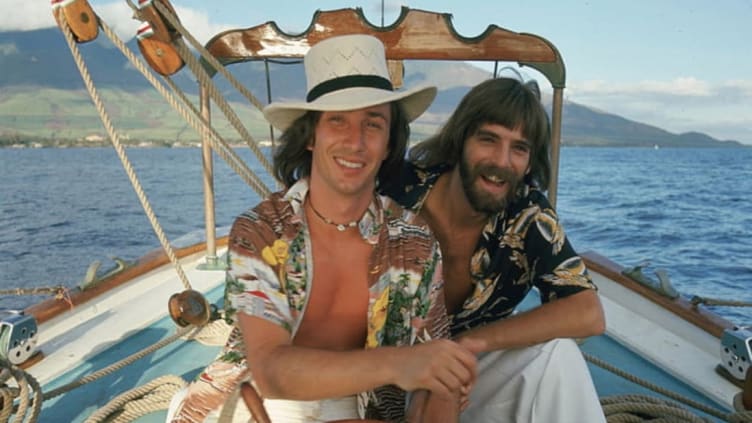
It’s not often that an entire genre of music gets retconned into existence after being parodied by a web series, but that’s exactly what happened after writer, director, and producer J.D. Ryznar and producers David B. Lyons and Hunter D. Stair launched the Channel 101 web series Yacht Rock in 2005. Hosted by former AllMusic editor “Hollywood” Steve Huey, the series was a loving sendup of the late '70s/early '80s smooth jams to which many Millennials and late period Gen-Xers were likely conceived.
The yacht rock aesthetic was innovated by a core group of musicians and producers including, but not limited to, Christopher Cross, Steely Dan, Robbie Dupree, Kenny Loggins, Toto, David Foster, and hirsute soft rock titan Michael McDonald, along with scores of veteran session musicians from the Southern California studio scene.
The Yacht Rock web series was perfectly timed to coincide with a contemporary renaissance of smooth music from the late '70s, the kind that was previously considered a guilty pleasure because it fell out of fashion in the mid-'80s and was soon thereafter regarded as dated and square compared to other burgeoning genres, like punk rock and hip-hop.

Yacht Rock's Early Years
The yacht rock era began roughly around 1976, when yacht rock pillar Kenny Loggins split up with songwriting partner Jim Messina to strike out on his own. That same year, fellow yacht rock mainstay Michael McDonald joined The Doobie Brothers. The two titans of the genre joined forces when Loggins co-wrote the definitive yacht rock hit “What a Fool Believes” with McDonald for the Doobies. They collaborated several times during this era, which was par for the course with such an incestuous music scene that was largely comprised of buddies playing on each other’s albums.
"Look at who performed on the album and if they didn’t perform with any other yacht rock hit guys then chances are [it's] ‘nyacht’ rock,” Ryznar said on the Beyond Yacht Rock podcast, referencing the pejorative term frequently used to describe soft rock songs that just miss the boat.
"The basic things to ask yourself if you want to know if a track is yacht rock are: Was it released from approximately 1976 to 1984? Did musicians on the track play with Steely Dan? Or Toto?," Ryznar said. "Is it a top 40 radio hit or is it on an album meant to feature hits?" And, of course, does the song celebrate a certain breezy, SoCal aesthetic?
Building the Boat
There are certain key ingredients necessary for a track to be considered yacht rock. For starters, it helps (though is not necessary) to have album art or lyrics that specifically reference boating, as with Christopher Cross's landmark 1980 hit “Sailing.” The music itself is usually slickly produced with clean vocals and a focus on melody over beat. But above all else, the sound has to be smooth . That’s what sets yacht rock apart from "nyacht" rock.
"Its base is R&B, yet it’s totally whitewashed," Ryznar explained on Beyond Yacht Rock . "There [are] jazz elements. There can be complex, challenging melodies; the solos are all cutting-edge and really interesting. There’s always something interesting about a true yacht rock song. It goes left when you expect it to go right."
Yacht rock’s complex musicianship can be attributed, in part, to the session players on each track. Musicians like percussionist Steve Gadd, guitarist and Toto founding member Steve Lukather, and Toto drummer Jeff Porcaro don’t have much in the way of name recognition among casual soft rock listeners, but they’re the nails that hold the boat together. Steely Dan, “the primordial ooze from which yacht rock emerged,” according to Ryznar, famously cycled through dozens of session musicians while recording their 1980 seminal yacht rock album Gaucho .
"These musicians were not only these slick, polished professionals, but they were highly trained and able to hop from style to style with ease,” Huey explained on Beyond Yacht Rock . “Very versatile.”
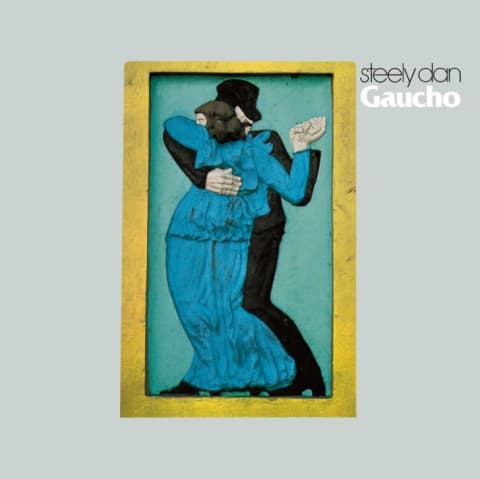
In Greg Prato’s 2018 tome, The Yacht Rock Book : An Oral History of the Soft, Smooth Sounds of the 70s and 80s , Huey broke down “the three main defining elements of yacht rock,” explaining that it requires “Fusing softer rock with jazz and R&B, very polished production, and kind of being centered around the studio musician culture in southern California … It’s not just soft rock, it’s a specific subset of soft rock that ideally has those elements."
Soft rock untethered
Whereas the music of the late 1970s and early ‘80s is often associated with the anti-establishment music of punk pioneers like the Dead Kennedys and the socially conscious songs being written by early hip-hop innovators like Grandmaster Flash and the Furious Five, yacht rock is the antithesis of the counterculture.
Yacht rock occupies a world that is completely apolitical and untethered to current events. Between the oil crisis, a global recession, and inflation—not to mention the fact that the U.S. was still licking its wounds from the loss of the Vietnam War and the disgrace of Watergate—the late '70s were a dark time for Americans. Yet yacht rock, at its heart, is a tequila sunrise for the soul, whisking the listener away to a world where they have the time, and the means, to idle away the hours sipping piña coladas at sea while decked out in flowy Hawaiian shirts and boat shoes.
Yacht rock was never edgy, nor did it ever feel dangerous. Yacht rock didn’t piss off anyone’s parents and no one ever threatened to send their kid to boot camp for getting caught listening to Kenny Loggins's “This Is It.” Yacht rock tracks are more of a siren song that invite your parents to join in on the chorus anytime they hear Toto’s "Rosanna."
Yacht rock songs are meant to set the soundtrack to a life where the days are always sunny, but as Ryznar pointed out on Beyond Yacht Rock , there’s “an underlying darkness”—just not the kind that’s going to derail a day of sailing to Catalina Island. No, yacht rock has elements of low-stakes heartbreak with sensitive male protagonists lamenting their own foolishness in trying to get back together with exes or hitting on women half their age.
The aspirational aspect of the genre dovetailed nicely with the overarching materialism defining the Reagan era. “Yacht rock was an escape from blunt truths, into the melodic, no-calorie lies of ‘buy now, pay never,’ in which any discord could be neutralized with a Moog beat,” Dan O’Sullivan wrote in Jacobin .
Some Like it Yacht
Although the cult comedy series Yacht Rock ceased production in 2010, the soft rock music revival it launched into the zeitgeist is still going strong. For the past few years, SiriusXM has been running a yacht rock station during prime boating season, or what those of us without bottomless checking accounts refer to as the spring and summer months. Yacht rock tribute acts like Yacht Rock Revue are profitable business endeavors as much as they are fun party bands. There’s also a glut of yacht rock-themed song compilations for sale and a proliferation of questionably curated genre playlists on Spotify.
Whether you believe yacht rock is an exalted art form or the insidious soundtrack to complacency, any music lover would probably agree that even a momentary escape from the blunt truths of life is something we could all use every now and then.

- Latest News
Rihanna, Bobby “Boris” Pickett, And Rockwell: Currently Trending Songs
Best cranberries songs: 20 essential tracks that linger on, ‘clues’: robert palmer takes soul into the new wave, sylvester: finding home in disco, jimmy reed: the story of an unlikely blues hero, ollie and the nightingales’ self-titled album: a landmark stax recording, ‘rhinestone cowboy’: after 14 years, glen campbell goes no.1 pop, jimmy eat world’s ‘the middle’ joins spotify’s billions club, sting shares new song, ‘i wrote your name (upon my heart)’, dean martin’s ‘greatest hits’ coming to vinyl in november, rich homie quan, atlanta rap hero, dies at 34, maroon 5 and cardi b’s ‘girls like you’ video joins youtube billions club, frank sinatra’s ‘l.a. is my lady’ to be re-released, aphrodite’s child to reissue ‘666 – the apocalypse of john’, yacht rock: a boatload of not-so-guilty pleasures.
The idea of yacht rock conjures up a particular lifestyle, but beneath the surface lies a treasure trove of sophisticated hits that continue to resonate.
Published on

Even some of those who signed up to the subgenre subtleties of what became known as yacht rock may consider it to be a time-locked phenomenon. Certainly, its chief protagonists first cast their subtle soft-rock sophistication in the 70s and 80s, but its melodic echoes can still be heard all these decades later.
Perhaps unusually, the phrase itself was coined as a kind of lighthearted castigation of the adult-oriented rock that seemed to exude privileged opulence: of days in expensive recording studios followed by hedonistic trips on private yachts, typically around southern California. The web TV series of the mid-00s that parodied the lifestyle was even named Yacht Rock ; one of the biggest hits of a chief exponent of the sound, Christopher Cross, was, of course, “Sailing.”
The recent resurgence in the long career of another staple, Michael McDonald, is testament to the durability of a style that was, after all, grounded in musicianship and melodicism of the highest order. Nearly 40 years after he and fellow yacht rock principle Kenny Loggins co-wrote and performed the Grammy-winning “This Is It,” the pair were afforded the high praise of a collaboration with acclaimed modern-day jazz-funk bassist Thundercat, on his track “Show You The Way.” Ahead of that, McDonald’s guest appearance with Thundercat at the 2017 Coachella Festival was a viral sensation.

Setting sail
Like other subgenres that grew from an existing style, just as Americana did from country, the starting point of yacht rock is a matter of endless debate. Some hear it in the early 70s soft rock of Bread and hits such as “Guitar Man,” or in Seals & Crofts, the duo of the same period whose 1973 US Top 10 hit “Diamond Girl” and its follow-up, “We May Never Pass This Way (Again)” are pure, classy, elegantly played and harmonised yacht rock.
As the 70s progressed and album rock radio became an ever more powerful medium in the US music business, studio production grew along with the budgets to fund it. High-fidelity citadels such as Sunset Sound and Ocean Way were the industry epitome of the Los Angeles hedonism of the day, and played host to many of the artists we celebrate here. Perhaps it was the combination of financial independence and the sun-kissed surroundings that gave rise to the phenomenon, but this was music that not only sounded opulent – it made you feel somehow more urbane just by listening to it.
California singer-songwriter Stephen Bishop was another of the artists who would retrospectively become part of what we might call the yachting club. Indeed, it’s important to point out that “yacht rock” was not a term that existed at the time the music was being made. Bishop’s acclaimed 1976 debut album, Careless , was a masterclass in well-crafted pop music for those no longer hanging on the words of every chart pin-up. Its tender opening ballad, “On And On,” which peaked just outside the mainstream US Top 10 and reached No.2 on the Easy Listening chart, is a prime example.
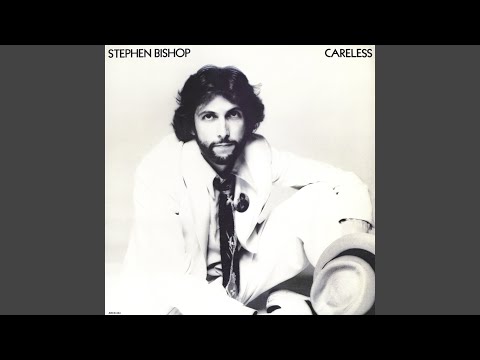
Making waves
McDonald, for his part, might be afforded the questionable honor of the Yacht Rock theme tune with his solo hit “Sweet Freedom,” but had earlier been a key part of the unconscious movement as a member of the Doobie Brothers. The double Grammy-winning landmark “What A Fool Believes,” again written by McDonald with Loggins, stands tall in this hall of fame. Similarly, Toto, another band of master studio craftsmen whose critical and commercial stock has risen again in recent times, stood for all the principles of yacht rock with tracks such as “99” and the undying “Africa.”

That 1982 soft-rock calling card came from the Toto IV album, which was, indeed, recorded in part at Sunset Sound and Ocean Way. But Steely Dan , one of the bands to prove that yacht rock could come from other parts of the US where the attendant lifestyle was less practical, made perhaps their biggest contribution to the subgenre after Walter Becker and Donald Fagen moved back to their native East Coast.
After their initial incarnation as a live band, Steely Dan were well established in their peerless cocoon of pristine studio production when they moved back east. That was after recording 1977’s superb Aja , the album that announced their ever-greater exploration of jazz influences. Fans and critics of the band both used the same word about them, perfectionism: some as a compliment, others as an accusation. But 1980’s equally impressive Gaucho was their yacht rock masterpiece.
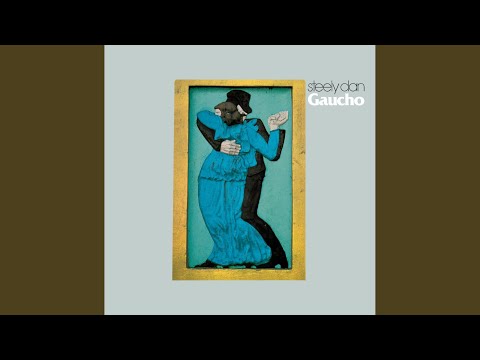
Ripple effect
In such a subjective phrase, other artists seen by some as yacht rock representatives, such as Daryl Hall & John Oates, Journey, the Eagles, or even Canada’s Gordon Lightfoot, are thought by others to be creatively or geographically inappropriate, or just too mainstream to break out of the overreaching AOR terminology.
But a significant number of other artists, whose names are less quoted today, had their finest hours during the pop landscape of the late 70s and early 80s that we’ve been visiting here. Amy Holland won a Best New Artist Grammy nomination in 1981 helped by “How Do I Survive,” written by McDonald, whose wife she became soon afterwards. Robbie Dupree, a Brooklyn boy by birth, also epitomized the style with his 1980 US hit “Steal Away.” Then, in 1982, America, the band known for their definitive harmonic rock of a decade earlier, mounted a chart return with the suitably melodic “You Can Do Magic.”
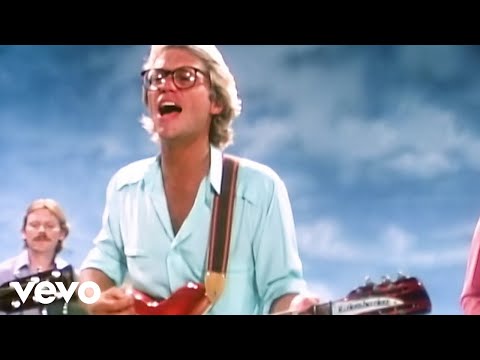
The final word goes to Michael McDonald, the unwitting co-founder of the yacht rock sound. When the aforementioned mockumentary series was at the height of its popularity, he was asked if he had ever owned a yacht, and replied (perhaps disappointingly) in the negative. But, he added, “I thought Yacht Rock was hilarious. And uncannily, you know, those things always have a little bit of truth to them.
“It’s kind of like when you get a letter from a stalker who’s never met you. They somehow hit on something, and you have to admit they’re pretty intuitive.”
Listen to the Soft Rock Forever playlist for more yacht rock classics .
October 28, 2019 at 8:42 pm
if you dig this sound, you gotta check out Yachty by Nature the best yacht rock band on the West Coast. They play it all live without the backing tracks (yuck) that some bands do. They just got voted #1 Best Live Cover Band in Orange County and spreading yacht rock all over the country. Dive in!!! #yachtrock https://yachtybynature.com
October 28, 2019 at 8:44 pm
BTW, great article!!!!! Well written and thoughtfully addressed the idea of Nyacht Rock artists to the purists following the genre!
' . esc_html__( 'Leave a Reply', 'zox-news' ) . '
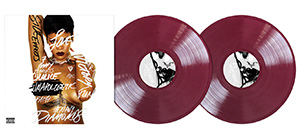
The Bizarre History Of Yacht Rock Music
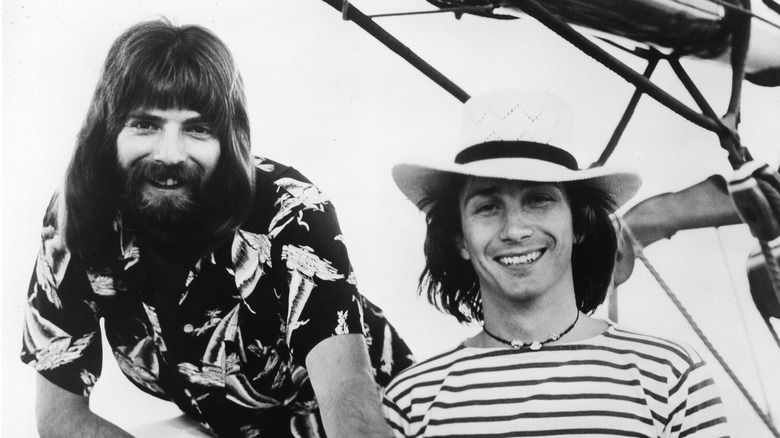
Popular music has always been complex. Different musical styles break up into infinite sub-genres — what started off as rock 'n' roll has splintered into dozens of sub-genres, and even the considerably younger musical genre of rap has splintered into several distinct styles. And each of those sub-genres then splinters as musicians innovate and reinvent the form.
None of this is science, though, so it's easy to get lost down rabbit holes when discussing what bands or songs belong in what genre or sub-genre. Yacht rock is a perfect example: None of the artists currently considered to be yacht rockers called themselves that at the time or were even aware that they were carving out a distinct sub-genre of rock music. The whole idea of yacht rock is a modern invention — and yet it perfectly describes a specific type of music that ruled pop culture roughly between 1975 and 1985.
What was yacht rock? It's a soft rock musical style, sometimes called the California sound, exemplified by smoothness and melody — these weren't exactly bangers, but that doesn't mean they were bad. Yacht rock could be very musically complex, incorporating elements of jazz into their compositions. The songs were usually introspective and did not engage with politics or current events at all — they were frictionless. Imagine a wealthy white man sailing on his yacht in 1980, and the music he's listening to in your imagination is what we're talking about. Here's the bizarre history of yacht rock.
The term was coined in 2005

Although the roots of yacht rock arguably go back to the 1960s, the history of yacht rock begins in 2005. That's because prior to that year, the term and concept of yacht rock simply didn't exist.
According to Rolling Stone , it all began on June 26, 2005, when the 12-episode web series "Yacht Rock" was released by Channel 101. As explained by Mental Floss , the series was a lovingly mocking look back at the smooth music of the late 1970s and early 1980s, written and directed by J.D. Ryznar, produced David B. Lyons and Hunter D. Stair, and hosted by Steve Huey, a former editor at AllMusic. MasterClass notes that the series was fictional — it depicted rockers like Kenny Loggins and Michael McDonald as a bunch of goofy friends hanging out and composing the smoothest rock music possible.
Ryznar and company were making gentle fun of those soft rock musicians, but the concept of yacht rock was so obviously appropriate it became viral. They defined it as perfectly produced, with a high level of musicianship and harmonic sophistication (in fact, far from being bad music, many yacht rock songs have been sampled numerous times by modern artists ), and imbued with the vibe and sound of 1970s Los Angeles. Although many yacht rock songs do have nautical references, it's not necessary to be considered yacht rock.
The roots of yacht rock go back to the 1960s
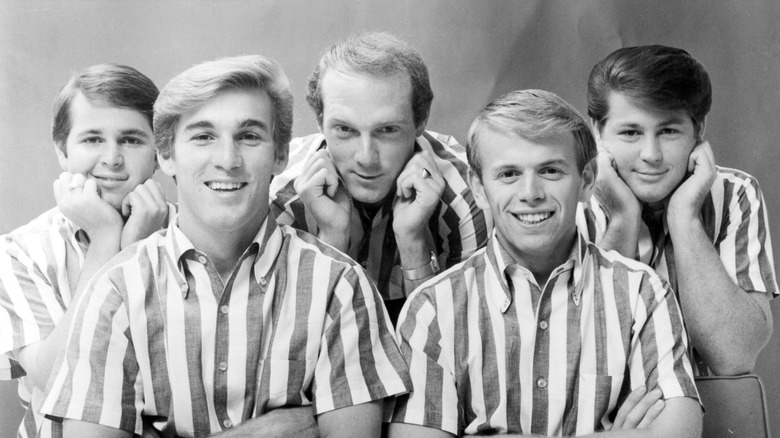
Although not all yacht rock songs reference the ocean, yachts, or the beach, the distant roots of the sound and the vibe go back to 1961. That's the year The Beach Boys was formed. As noted by Jacobin Magazine , the cheerful fun in the sun beach aesthetic of The Beach Boys' sound provides the fundamental template for yacht rock's sound. What elevated The Beach Boys was the songwriting craft of Brian Wilson — without his subtle genius, all that was left was the perfect production standards and sunny vibe. As noted by Warm 106.9 , the band's classic song "Sloop John B" is often cited as a clear influence on the sailing-obsessed soft rock that hit the charts a decade later.
In fact, as noted by MeTV , The Beach Boys' 1973 song "Sail On, Sailor" is considered a proto-yacht rock song. Because it was co-written by troubled musical genius Brian Wilson, the song isn't really yacht rock, but it holds many of the seeds, from its perfect production to the jazzy complexity hidden under mellow good-time vibes. And everything came full circle in 1988 when The Beach Boys released their Number One hit, "Kokomo," a song Stereogum describes as "extremely boring and self-satisfied yacht-rock." Singer Mark McGrath cites "Kokomo" as probably the last legitimate yacht rock song to ever be released.
Two foundational groups form
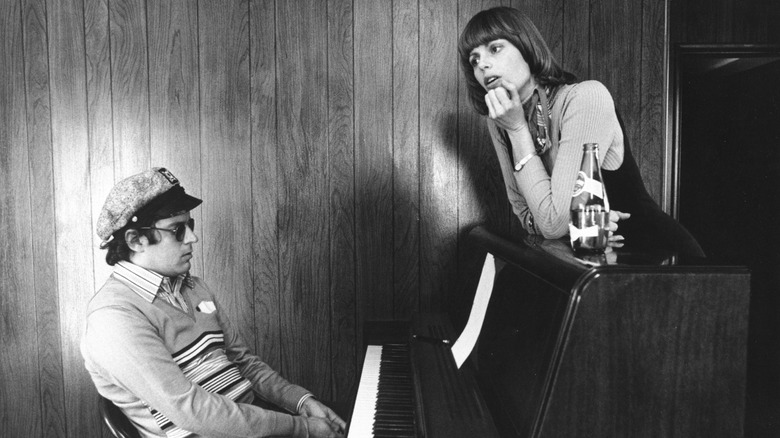
It wasn't just the California vibe and sailing imagery that yacht rock took from The Beach Boys. As noted by The Guardian , in the mid-1960s, a man named Daryl Dragon began playing keyboards with The Beach Boys as a backup musician. Dragon had a habit of wearing a ship captain's hat as part of his on-stage costume, underscoring the nautical theme and earning him the nickname "The Captain." According to Jacobin Magazine , Toni Tennille also toured with The Beach Boys. Dragon and Tennille married and, a few years later, formed the group Captain & Tennille, whose Grammy-winning song "Love Will Keep Us Together" is considered one of the earliest yacht rock hits.
Meanwhile, another foundational yacht rock band formed in 1972: Steely Dan . According to The Seattle Times , part of what defines yacht rock is the people involved. Members of The Doobie Brothers – especially Michael McDonald, Toto , and Steely Dan tend to be involved in some capacity (songwriting, background vocals, or performing) on most yacht rock songs. This was the inspiration for the original comedy sketch that birthed the whole concept . Steely Dan came to define the perfect production, jazzy musicality, and smooth melody lines of the genre. And as noted by Mental Floss , Steely Dan shared session musicians with many of their musical genre peers, explaining the somewhat similar sound produced by these different groups.
Loggins and Messina broke up in 1976
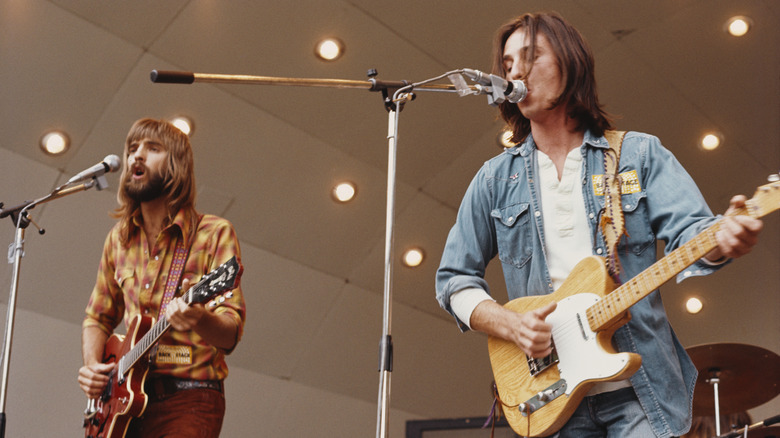
Many of the pieces that would form yacht rock existed long before the genre coalesced into a recognizable sound and vibe. Kenny Loggins and Jim Messina formed Loggins & Messina in 1971, and according to The Chicago Tribune , their 1975 album "Full Sail" is part of yacht rock legend. The album's cover art depicts Loggins and Messina on an actual yacht, looking pretty relaxed and very California. The album was held up at the very beginning of the "Yacht Rock" series to demonstrate what the creators of the series were talking about.
Loggins & Messina are crucial to the yacht rock story because they broke up. As noted by The Seattle Times , one of the features of yacht rock is the loose collaborations between a small group of musicians — and Kenny Loggins is a key member of that group. Loggins wrote many yacht rock classics recorded and performed by other artists, and Loggins himself often released his own versions of songs he gave to other artists, increasing his influence over the genre.
Loggins, now a free agent, worked with Michael McDonald of the Doobie Brothers several times as the core yacht rock musicians collaborated freely, ensuring a certain uniformity of sound and style that resulted in a recognizable sub-genre.
Steely Dan releases Aja
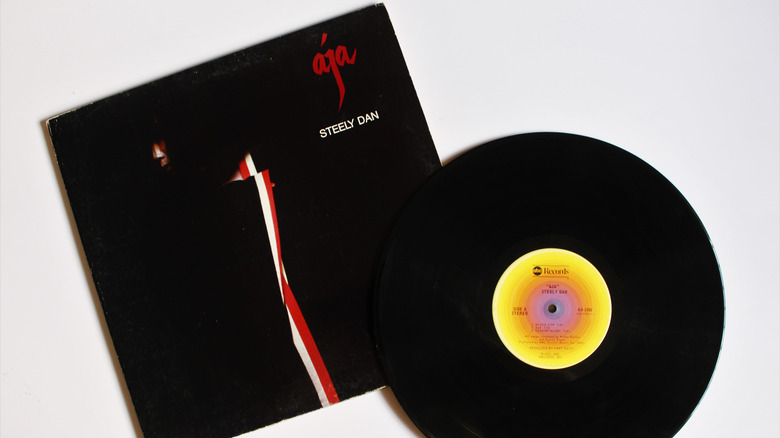
Mention the band Steely Dan in conjunction with the concept of yacht rock, and many people will have a passionate reaction . Yacht rock is often erroneously believed to be bad music and is frequently conflated with soft rock. But the opposite is true: According to MasterClass , part of what defines yacht rock is the harmonic sophistication and jazz influences of the music. In other words, yacht rock was often composed and recorded at a very high level of musical ability.
That's where Steely Dan comes in. Famed for their complex arrangements and overt jazz influences, the band produced smooth, melodic songs that perfectly captured the late-1970s California vibe. Rolling Stone considered the band's sixth studio album, "Aja," a pinnacle for the musical genre. The songs are intricate, the production is pristine, and the mood is mellow. Decider was even more enthusiastic in their praise, establishing the album as essential listening to any fan of yacht rock and notes that by the time Steely Dan (Walter Becker and Donald Fagan) recorded "Aja" they weren't really a band — they were two guys with a lot of session musicians, musicians who often played on other yacht rock bands' recordings, resulting in a similar sound on many of these records. And Michael McDonald of The Doobie Brothers even sings backup on some songs.
U ltimate Classic Rock ranks one of the songs from the "Aja," "Peg," as the second-best yacht rock song of all time and describes "Aja" as having "impeccable airtightness that falls somewhere between soft pop and jazz."
The Doobie Brothers release What a Fool Believes
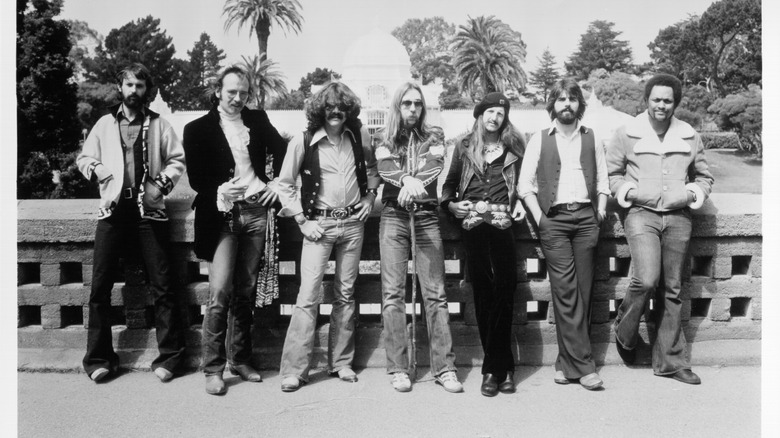
Movements in music and the evolution of sub-genres usually have deep roots that go back invisibly into the past. But they often also have a key moment that clearly marks their beginning. As noted by Mental Floss , for yacht rock, that beginning comes in 1978 with the release of "What a Fool Believes" by The Doobie Brothers.
The song was written by Kenny Loggins and Michael McDonald. Not only did this song kick off the habit of collaboration between the artists that came to define this genre — IGN pegs it as number three on its list of the best yacht rock songs, describing the song as quirky and mellow, while according to Smooth Radio , the song is the ultimate example of what makes a yacht rock song. The song was a massive hit for The Doobie Brothers, one of the few non-disco hits that year.
The song is considered so "yachty," in fact, that according to Houstonia Magazine , the "Yacht Rock" series that defined the musical genre kicks off with an episode spoofing the writing of the song. The song is, indeed, kind of the platonic ideal of a yacht rock song: It's musically complex, smooth as heck, and lyrically focused on a lovelorn fool, a frequent topic of yacht rock songs. And, of course, it involves Loggins and McDonald.
Rupert Holmes releases Escape (The Piña Colada Song)
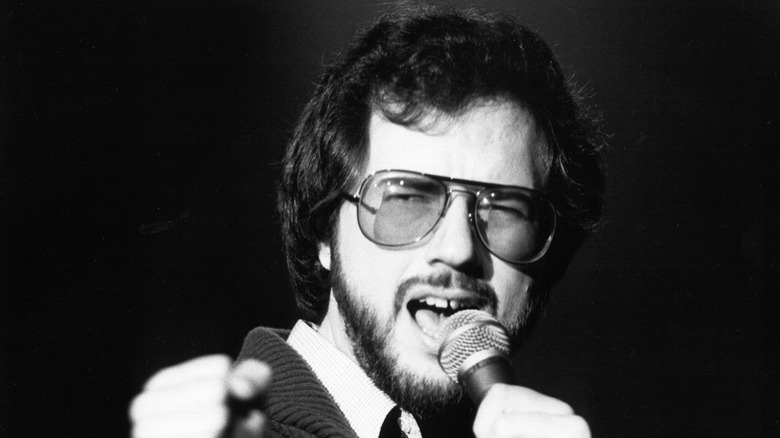
M ark McGrath , the lead singer of Sugar Ray, calls "Escape (The Piña Colada Song)" by Rupert Holmes the ultimate yacht rock song and an inspiration for all future yacht rock songs to follow. The song's connection to the genre is so clear that ABC News reports it was chosen for inclusion in the "NOW That's What I Call Yacht Rock" compilation album.
It's easy to see why the song (and the album containing it, 1979's "Partners in Crime") is what a computer algorithm would create if tasked with composing a yacht rock song. As noted by Rolling Stone , Holmes displays the musicianship of Steely Dan while singing with the exuberance of Barry Manilow. That combination of mellow, smooth delivery and complex song arrangements, and a distinctly California vibe make this an iconic example of yacht rock. As MasterClass notes, the song's clean production links it to other yacht rock songs because it eliminates mistakes or rough spots and offers the illusion of smooth perfection.
The song is also one of the most enduring and well-known yacht rock songs of all time. If you're trying to explain yacht rock to someone, this is the song to use as an example.
The high point of yacht rock: Christopher Cross releases Sailing
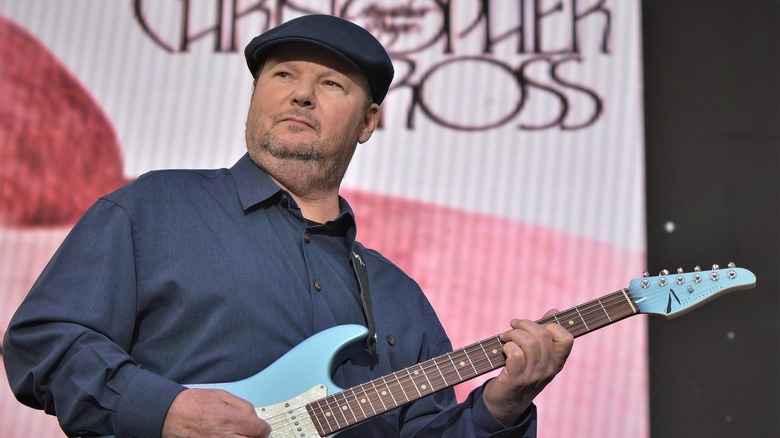
The unquestioned high point of yacht rock came in 1980. Songs from bands associated with this genre of music had been big hits before, but that year a yacht rock album dominated pop culture, ensuring that this style of music would be remembered and defined decades later. We're talking about, of course, "Sailing" by Christopher Cross .
U ltimate Classic Rock reports the song was a smash hit, earning Cross several Grammy Awards, including Record of the Year, Song of the Year, and Best Arrangement. Its yacht rock cred begins with its title and themes — it's literally about sailing, presumably on some sort of yacht (Cross doesn't seem the type to sail on anything less). The song is smooth as glass but extremely complex, combining strings, open-tuned arpeggios, and what Rolling Stone calls "an elegant pop classicism." And as Jacobin Magazine notes, the song features backing vocals from none other than the artistic glue that holds the genre together, Michael McDonald.
"Sailing," and the album it hailed from, remain the most successful examples of yacht rock, a pinnacle of sales and awards both Cross and the genre never managed again. No one knew they were part of the yacht rock movement at the time or that it was all (slowly) downhill from there.
Toto ties it all together
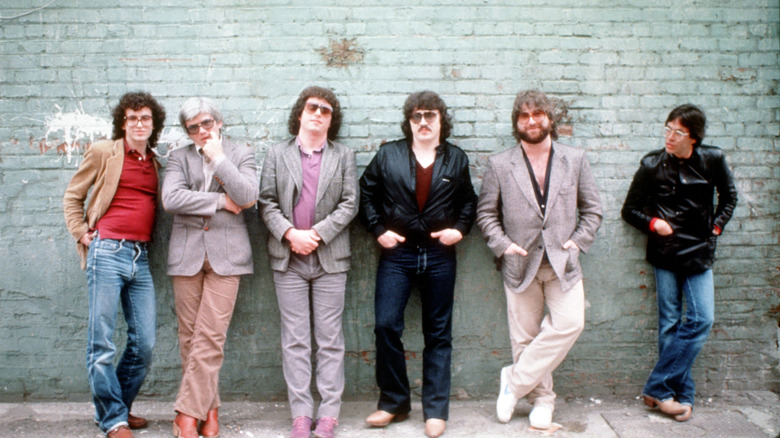
One of the characteristics of yacht rock, as noted by Mental Floss , is the extremely high level of musicianship on the records — largely due to the use of professional session musicians that were shared by yacht rock groups like Steely Dan. In the late 1970s, some of those session musicians decided to form their own band, and Toto was born. This was a key moment: As noted by the man who helped define yacht rock, J.D. Ryznar, one way to identify a yacht rock song is to ask if members of Toto played on it.
In 1982, Toto released "Toto IV," which Smooth Radio noted contains two all-time yacht rock classics in "Rosanna" and "Africa." Vinyl Me, Please calls "Toto IV" a perfect introduction to the musical genre, which makes sense since the members of Toto were involved in so many recordings we now consider to be yacht rock.
But Toto was involved in another project in 1982, one that proves how the yacht rock sound traveled through session musicians: Michael Jackson's "Thriller." As reported by NOW Magazine , Toto was heavily involved with the album, and Toto keyboardist Steve Porcaro even contributed a classic yacht rock track that became the fifth Top Ten song from the album (per Rolling Stone ): "Human Nature." Porcaro originally wrote it for Toto but accidentally included it on a tape of demos for producer Quincy Jones — who immediately loved it.
Kokomo: Yacht rock's last gasp
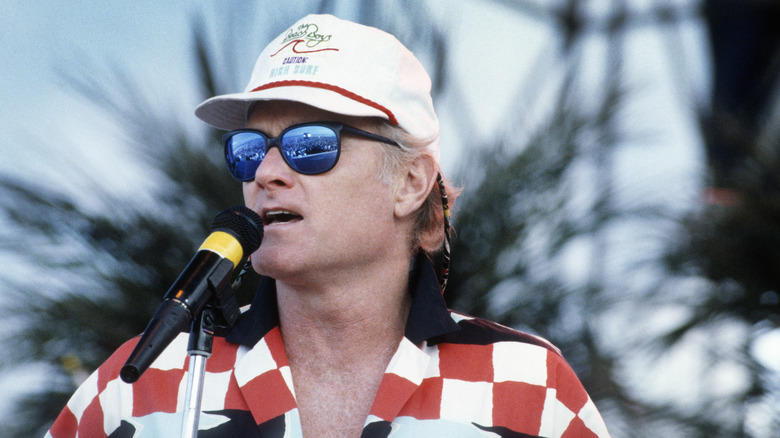
The heyday of this musical genre was between roughly 1975 and 1985. By the late 1980s, musical tastes had shifted, and most yacht rockers found themselves fading off the charts. But there was one final gasp of the genre in 1988 when the legendary band The Beach Boys released their No.1 hit on the Billboard Hot 100, "Kokomo."
Despite its success, the song is widely hated ( Mel Magazine shared their extreme dislike for the song and even Mike Love), but it's definitely a yacht rock song. According to Sugar Ray lead singer Mark McGrath , it's likely the last yacht rock song to be released. By the time The Beach Boys began working on it, however, they weren't too concerned about quality — as noted by EW.com , the band hadn't been on the charts in years, didn't have a record contract, and had been reduced to playing Oldies tours to pay the bills. The band accepted the invitation to contribute a song to the soundtrack of the Tom Cruise and Elisabeth Shue romantic comedy, "Cocktail" largely for the money and actually left the composition of the song to John Phillips, Scott McKenzie, and Terry Melcher, giving the song the traditional session-player touch of all yacht rock songs.
The song's yacht rock bona-fides are pretty clear — in fact, as Stereogum notes, the original demo makes its yacht rock roots very, very clear. But even The Beach Boys' version with its earworm chorus retains the smooth, slickly-produced sound that marks all yacht rock tunes.
The resurgence of yacht rock

After being established as a distinct genre of music by the " Yacht Rock" web series in 2005 , yacht rock enjoyed a period of viral fame. Everyone who came across the term quickly realized it actually made sense to regard these songs as a specific style of soft rock, and there was a lot of buzz around the topic. But all buzz fades, and after a few years, yacht rock was no longer an exciting new idea — it was an accepted truth.
But in recent years, the genre has made a comeback, infiltrating pop culture for the second time. A seminal moment in this comeback was the release of "The Blue Jean Committee" in 2018. As noted by 100.9 The Eagle , "The Blue Jean Committee" is a "mockumentary" that has actually served as an introduction to yacht rock for a whole new generation of people. Esquire reports that the show (and the "fake yacht rock band" at its center) was created by comedians Fred Armisen and Bill Hader for their TV series "Documentary Now!" But they went as far as actually writing songs for the band — and even made a music video showcasing the very yacht rocky song "Catalina Breeze," eventually releasing an entire EP, according to Wired . Suddenly, yacht rock was on everyone's mind again, more than 15 years after the initial phenomenon and more than 40 years since the actual musical era ended.
Yacht rock is modern again
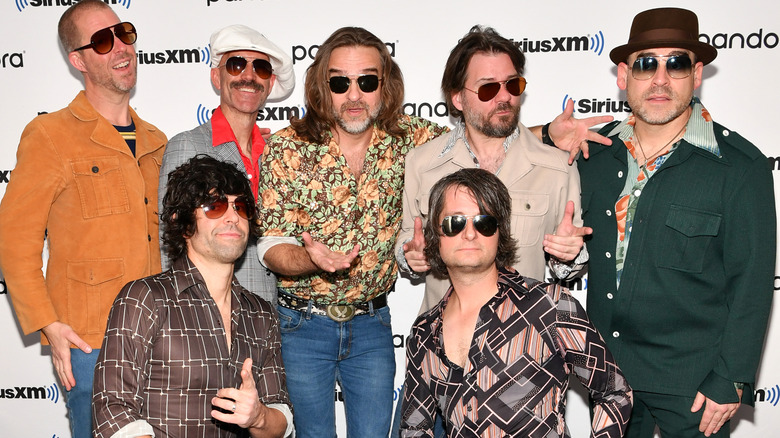
As noted by The Guardian , yacht rock is experiencing a full-on reappraisal. Long considered to be trite and boring, emblematic of the insincere late 1970s and early 1980s era, a new appreciation for the very things that make these songs yacht rock is developing. One key reason is that clear production noted by MasterClass — yacht rock songs sound timeless and still slap today because they weren't thrown together. The bands spent a lot of time and money and care to make every song sound amazing, which has helped them pass the test of time. And recent years have seen bands like The Yacht Rock Revue achieve surprising success in the genre, as noted by The Atlanta Journal-Constitution .
As InsideHook notes, the rise of Internet culture has helped people rediscover and appreciate yacht rock. Younger generations have grown up in a world where they can listen to anything, any time they want. The result has been a softening of genre edges, and the adoption of old, outdated musical trends. There's a whole new group of soft rock bands that aren't covering yacht rock songs; they're writing new ones.
And as reported by MTV , yacht rock original gangsters are also releasing new music, proving that the genre has fresh legs. According to NPR , in 2017, Kenny Loggins and Michael McDonald collaborated with bassist and singer Thundercat on the song "Show You the Way." Suffice it to say, this ship (or should we say yacht?) is still sailing.
- 2023 Wrapped
- About Spotify
- Press Center
Life at Spotify
- Safety at Spotify
- Diversity & Inclusion

Stream On 2023
During Stream On, we’ll share new developments to help creators continue to chart pathways to success and build a truly global audience.

Time to Play Fair
When competition is fair, both consumers and companies win. Learn about our efforts to even the playing field for all developers.

Spotify Loud & Clear
Artists deserve clarity about the economics of music streaming. This site sheds light on the global streaming economy and royalty system.

Spotify x FC Barcelona
Music and football come together in a way that’s entirely new in our partnership with FC Barcelona.
For Artists
For podcasters, for advertisers, for developers, for investors, for engineering, for vendors, for songwriters, for help, chat & ideas.
- Search for:
- Get Spotify
- Company Info
- Communities
Spotify Communities

Yacht Rock: How the Smooth Sounds of the ’70s and ’80s Became a Genuine Genre
July 9, 2019
When the weather’s warm, the weekends long, and the cocktails crafted using blue curaçao, there’s no better music than yacht rock —the soft, smooth sounds released between roughly 1976 and 1984 that typically feature vocals and keyboards with guitars barely audible in the background. Yet, this genre of music didn’t even have a name until a few years ago.
Artists like the Eagles , Fleetwood Mac , and Chicago were once viewed as belonging to an adult-contemporary, soft-rock bridge between ’70s disco and ’80s arena rock. But in 2005, a few friends noticed that several artists’ albums of the era had boats on their covers. They jokingly called these albums “marina rock” and created a 12-episode comedy video series that went viral. Yacht rock was born, and today the video series’ creators even have a podcast, Beyond Yacht Rock .
On Spotify, yacht rock is most popular among those aged 45-54 and 18-24, indicating that listeners who came of age during the music’s heyday and their children love those smooth grooves. While yacht rock is most streamed in the U.S., U.K., and Canada, when measured as a percentage of total streams yacht rock is far and away the most popular in New Zealand. In fact, seven of the top 10 cities that keep yacht rock on repeat are in New Zealand (which also just so happens to be the current holder of the America’s Cup —coincidence?).
But what are the defining characteristics of yacht rock? Let our yacht-or-knot list below be your celestial guide.
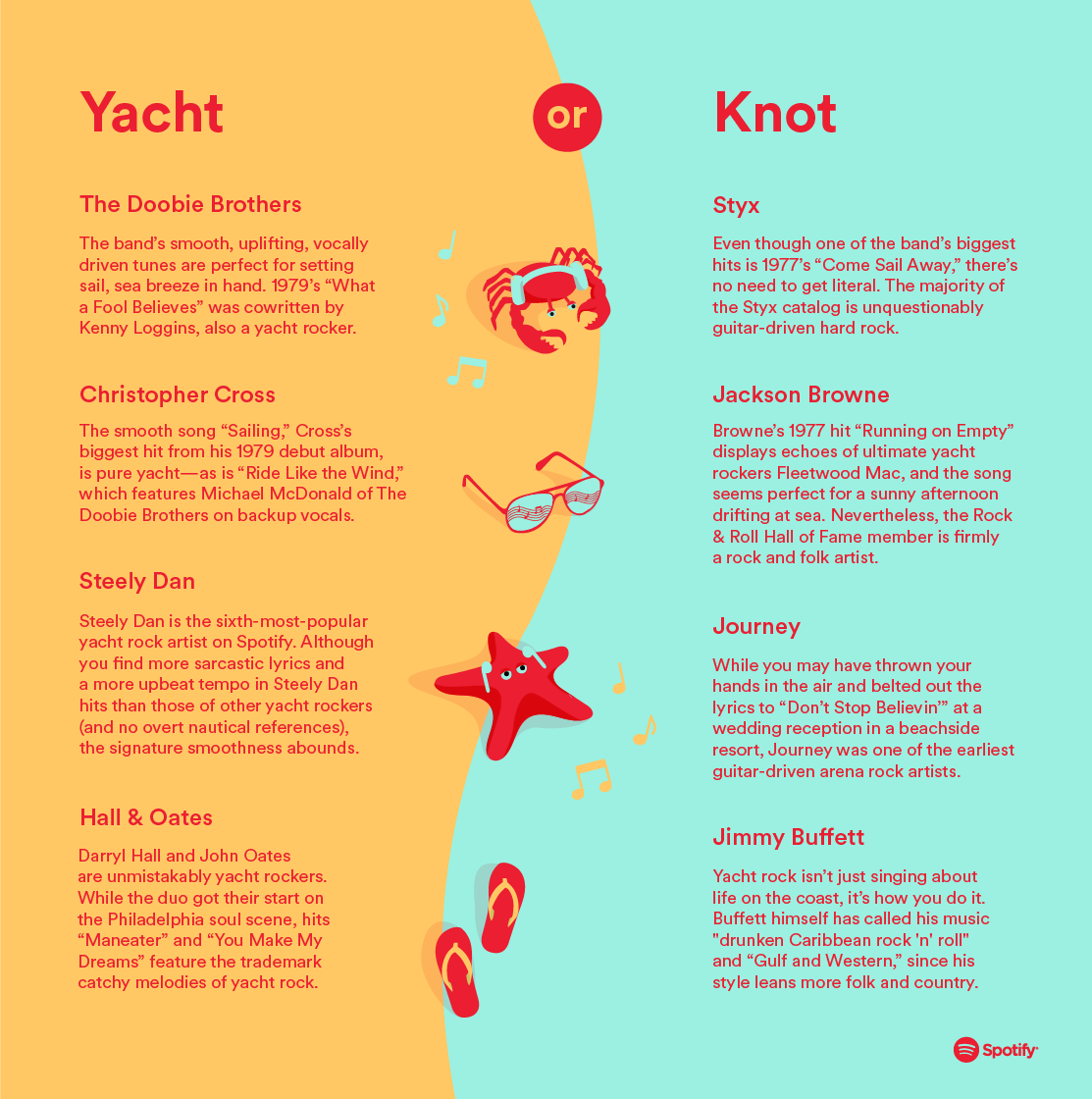
Check out the official Yacht Rock playlist .
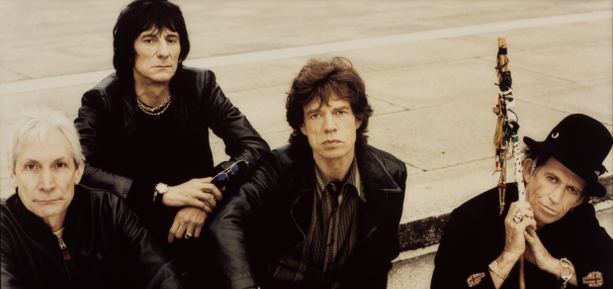
Charting the Onstage Evolution of The Rolling Stones
Discover more.

Guns N’ Roses Bassist Duff McKagan Sings a Message of Hope

Legend of French Singer-Songwriter Serge Gainsbourg Looms Large on Spotify

How Well Do You Know the Spotify Songs of Summer? Take Our Nostalgia Quiz
History of Sound
Yacht rock.
Yacht rock (originally known as the West Coast sound or adult-oriented rock) is a broad music style and aesthetic commonly associated with soft rock, one of the most commercially successful genres from the mid-1970s to the mid-1980s. Drawing on sources such as smooth soul, smooth jazz, R&B, and disco, common stylistic traits include high-quality production, clean vocals, and a focus on light, catchy melodies. Its name, coined in 2005 by the makers of the online video series Yacht Rock, was derived from its association with the popular Southern Californian leisure activity of sailing.
- Smooth jazz
- Pub rock (United Kingdom)
- Jazz fusion
- Soul music
Derivatives
- City pop
- Entertainment
Finally, a name for that music: “Yacht Rock”
A few little-known facts about singer/songwriter Michael McDonald: Aside from topping the charts in the 1980s, he was a tireless defender and advocate of smooth music. His best friend ...
Share story
A few little-known facts about singer/songwriter Michael McDonald: Aside from topping the charts in the 1980s, he was a tireless defender and advocate of smooth music. His best friend died in a back-alley songwriting contest, and he feuded with one-time songwriting partner Kenny Loggins. Actor Vincent Price, however, forced the two to make amends so they could conjure a spirit to help with the recording of Michael Jackson’s “Thriller.” Sound a bit far-fetched? Rockin’ on the yacht JD Ryznar offers a curated selection of his favorite less-obvious songs of the era “Any World (That I’m Welcome To)” by Steely Dan “Aside from being totally awesome and beautiful, this is one of the first Dan songs to feature Michael McDonald’s huge background vocal power. The presence of McDonald’s voice pretty much legitimizes any song’s Yacht Rock status.” “It Keeps You Runnin’ ” by Carly Simon “This is not only a cover of the Doobie Brothers’ hit, but also actually features the Doobies as the backing band. Still, it’s a totally original take on the song, and a rare example of Yacht Rock female empowerment.” Kenny Loggins’ alternate versions “If you hear a song on a Doobie or Michael McDonald album that was co-written by Kenny Loggins, chances are, Loggins has a version of that song with a classic Loggins twist. Check out Loggin’s versions of the Doobies ‘What a Fool Believes’ and Michael McDonald’s ‘I Gotta Try’ & ‘No Lookin’ Back’ to see what I mean.”
Not to JD Ryznar, the Los Angeles based writer, actor and director who portrays the man with the beard in his series of short films called “Yacht Rock.” The shorts, which have garnered a cult following thanks to their success as part of the Web site Channel 101’s monthly film contests (and subsequent downloads and blog shout-outs), take a look behind the scenes at the creation of the ultra-creamy hits that made folks like McDonald, Loggins and Toto pop stars in the late 1970s and early 1980s. Ryznar coined the term “Yacht Rock” after he noticed a series of connections and similarities between Steely Dan and groups like the Doobie Brothers and Toto. Such as:
All of them seemed to share members and collaborate frequently with each other and people like Kenny Loggins. A lot of the music of the era featured albums with guys on boats on the cover and songs about sailing. This music sounds really good on boats because it’s good for relaxing, sitting back and drinking. And so “Yacht Rock” was born. The show (see the full episodes here: www.channel101.com/shows/show.php?show_id=152 offers surreal backstories for singles known more for their gentle grooves than any underlying drama. But the series doesn’t attempt to satirize the musicians themselves. Instead, Ryznar takes aim at the songwriting process. “When people want to sit down and write a hit record, they get together and it’s trial and error — not so much fun,” he says. “But if you infuse it with some sort of completely made up fairy tale story, suddenly it becomes a lot more interesting.” This sly reverence for the subject matter gives the show an added nuance. After all, taking potshots at yesterday’s hit makers would be just too easy. But much of the humor also comes from inverting the stereotypical images people have of the musicians in question. “When artists like Hall & Oates and Michael Jackson have such huge personas, you don’t want to just see another impersonation,” says Ryznar. Thus, Hall & Oates become two thuggish trash-talkers from the hard streets of Philadelphia always looking for a fight and Michael Jackson gets portrayed as a brute womanizer. Even Journey front man Steve Perry gets the treatment, showing up in a couple of episodes as a motivational rocker who persuades Kenny Loggins to turn to the hard side. Ryznar’s show has gotten him some notice and even an agent. The moderate success he’s achieved underscores the growing impact that Channel 101 ( www.channel101.com ) has as an important outlet for up and coming talent to showcase material that ordinarily wouldn’t get a cursory glance at major Hollywood studios. Started by Dan Harmon and Rob Schrab in 2003, Channel 101 allows anyone to submit a pilot, the best of which are selected and shown at monthly screenings held in Los Angeles. A sister site, www.channel102.net , recently opened up shop in New York. The top five vote-getters each month are added to a category called Primetime and are then allowed to make another episode. This constant influx of submissions means everyone has to keep upping the ante from month to month. While Yacht Rock’s subject matter might make it seem like a strange candidate for such a word-of-mouth following, Ryznar’s idea ended up in the right place at the right time.
- Newsletters
- Account Activating this button will toggle the display of additional content Account Sign out
What a Fool Believes Edition
How Yacht Rock, a genre invented in the ’00s, gave a name to the smooth West Coast music of the ’70s and ’80s.
Listen & Subscribe
Choose your preferred player:
- Apple Podcasts
- Amazon Music
Please enable javascript to get your Slate Plus feeds.
Get Your Slate Plus Podcast
If you can't access your feeds, please contact customer support.
Thanks! Check your phone for a link to finish setting up your feed.
Please enter a 10-digit phone number.
Listen on your phone: RECOMMENDED
Enter your phone number and we'll text you a link to set up the podcast in your app:
We'll only text you about setting up this podcast, no spam.
Listen on your computer:
Apple Podcasts will only work on MacOS operating systems since Catalina . We do not support Android apps on desktop at this time.
Listen on your device: RECOMMENDED
These links will only work if you're on the device you listen to podcasts on.
Set up manually:
How does this work?
We're sorry, but something went wrong while fetching your podcast feeds. Please contact us at [email protected] for help.
Episode Notes
This episode was released in August 2020 exclusively for Slate Plus listeners. As of August 2021, it’s available for non-subscribers.
In the late ’70s and early ’80s, a scene and a sound cropped up on the West Coast: polished, perfectionist studio musicians who generated sleek, jazzy, R&B-flavored music. About a quarter-century later, this sound was given a name: Yacht Rock. The inventors of the genre name weren’t thinking about boats … well, unless the song was Christopher Cross’s “Sailing.” Yacht Rock was meant to signify deluxe, yuppified, “smooth” music suitable for playing on luxury nautical craft.
Whatever you call it, this music really did command the charts at the turn of the ’80s: from Steely Dan to George Benson, Michael McDonald to Kenny Loggins, Toto to … Michael Jackson?! Believe it: Even Thriller is partially a Yacht Rock album. This month, Hit Parade breaks down what Yacht Rock was and how it took over the charts four decades ago—from the perfectionism of “Peg,” to the bounce of “What a Fool Believes,” to the epic smoothness of “Africa.”
Podcast production by Benjamin Frisch.
About the Show
Chris Molanphy, a pop-chart analyst and author of Slate’s “Why Is This Song No. 1?” series, tells tales from a half-century of chart history. Through storytelling, trivia, and song snippets, Chris dissects how that song you love—or hate—dominated the airwaves, made its way to the top of the charts, and shaped your memories forever.
Chris Molanphy is a feature writer and critic who writes widely about music and the pop charts.
- @cmolanphy on Twitter
- Top '70s Hard Rock Albums
- Last Touring Original VH Member
- Continued After Singer Died
- Hagar Explains Drummer Change
- David Gilmour Album Review
- Win a Chris Jericho Cruise

Top 50 Yacht Rock Songs
Yacht rock was one of the most commercially successful genres to emerge from the '70s and yet has managed to evade concise definition since its inception. For many listeners, it boils down to a feeling or mood that cannot be found in other kinds of music: Simply put, you know it when you hear it.
Some agreed-upon elements are crucial to yacht rock. One is its fluidity, with more emphasis on a catchy, easy-feeling melody than on beat or rhythm. Another is a generally lighthearted attitude in the lyrics. Think Seals & Crofts ' "Summer Breeze," Christopher Cross ' "Ride Like the Wind" or Bill Withers ' "Just the Two of Us." Yes, as its label suggests, music that would fit perfectly being played from the deck of a luxurious boat on the high seas.
But even these roughly outlined "rules" can be flouted and still considered yacht rock. Plenty of bands that are typically deemed "nyacht" rock have made their attempts at the genre: Crosby, Stills & Nash got a bit nautical with "Southern Cross," leading with their famed tightly knit harmonies, and Fleetwood Mac also entered yacht rock territory with "Dreams" – which, although lyrically dour, offers a sense of melody in line with yacht rock.
Given its undefined parameters, the genre has become one of music's most expansive corners. From No. 1 hits to deeper-cut gems, we've compiled a list of 50 Top Yacht Rock Songs to set sail to below.
50. "Thunder Island," Jay Ferguson (1978)
Younger generations might be more apt to recognize Jay Ferguson from his score for NBC's The Office , where he also portrayed the guitarist in Kevin Malone's band Scrantonicity. But Ferguson's musical roots go back to the '60s band Spirit; he was also in a group with one of the future members of Firefall, signaling a '70s-era shift toward yacht rock and "Thunder Island." The once-ubiquitous single began its steady ascent in October 1977 before reaching the Top 10 in April of the following year. Producer Bill Szymczyk helped it get there by bringing in his buddy Joe Walsh for a soaring turn on the slide. The best showing Ferguson had after this, however, was the quickly forgotten 1979 Top 40 hit "Shakedown Cruise." (Nick DeRiso)
49. "Southern Cross," Crosby, Stills & Nash (1982)
CSN's "Southern Cross" was an example of a more literal interpretation of yacht rock, one in which leftover material was revitalized by Stephen Stills . He sped up the tempo of a song titled " Seven League Boots " originally penned by brothers Rick and Michael Curtis, then laid in new lyrics about, yes, an actual boat ride. "I rewrote a new set of words and added a different chorus, a story about a long boat trip I took after my divorce," Stills said in the liner notes to 1991's CSN box. "It's about using the power of the universe to heal your wounds." The music video for the song, which went into heavy rotation on MTV, also prominently displayed the band members aboard a large vessel. (Allison Rapp)
48. "Jackie Blue," the Ozark Mountain Daredevils (1974)
Drummer Larry Lee only had a rough idea of what he wanted to do with "Jackie Blue," originally naming it after a bartending dope pusher. For a long time, the Ozark Mountain Daredevils' best-known single remained an instrumental with the place-keeper lyric, " Ooh, ooh, ooh, ooh Jackie Blue. He was dada, and dada doo. He did this, he did that ... ." Producer Glyn Johns, who loved the track, made a key suggestion – and everything finally snapped into place: "No, no, no, mate," Johns told them. "Jackie Blue has to be a girl." They "knocked some new lyrics out in about 30 minutes," Lee said in It Shined: The Saga of the Ozark Mountain Daredevils . "[From] some drugged-out guy, we changed Jackie into a reclusive girl." She'd go all the way to No. 3. (DeRiso)
47. "Sailing," Christopher Cross (1979)
You’d be hard-pressed to find a more quintessential yacht rock song than “Sailing.” The second single (and first chart-topper) off Christopher Cross’ 1979 self-titled debut offers an intoxicating combination of dreamy strings, singsong vocals and shimmering, open-tuned guitar arpeggios that pay deference to Cross’ songwriting idol, Joni Mitchell . “These tunings, like Joni used to say, they get you in this sort of trance,” Cross told Songfacts in 2013. “The chorus just sort of came out. … So I got up and wandered around the apartment just thinking, ‘Wow, that's pretty fuckin' great.’” Grammy voters agreed: “Sailing” won Record of the Year, Song of the Year and Best Arrangement at the 1981 awards. (Bryan Rolli)
46. "Just the Two of Us," Bill Withers and Grover Washington Jr. (1980)
A collaboration between singer Bill Withers and saxophonist Grover Washington Jr. resulted in the sleek "Just the Two of Us." When first approached with the song, Withers insisted on reworking the lyrics. "I'm a little snobbish about words," he said in 2004 . "I said, 'Yeah, if you'll let me go in and try to dress these words up a little bit.' Everybody that knows me is kind of used to me that way. I probably threw in the stuff like the crystal raindrops. The 'Just the Two of Us' thing was already written. It was trying to put a tuxedo on it." The track was completed with some peppy backing vocals and a subtle slap bass part. (Rapp)
45. "Sara Smile," Daryl Hall & John Oates (1975)
It doesn't get much smoother than "Sara Smile," Daryl Hall & John Oates ' first Top 10 hit in the U.S. The song was written for Sara Allen, Hall's longtime girlfriend, whom he had met when she was working as a flight attendant. His lead vocal, which was recorded live, is clear as a bell on top of a velvety bass line and polished backing vocals that nodded to the group's R&B influences. “It was a song that came completely out of my heart," Hall said in 2018 . "It was a postcard. It’s short and sweet and to the point." Hall and Allen stayed together for almost 30 years before breaking up in 2001. (Rapp)
44. "Rosanna," Toto (1982)
One of the most identifiable hits of 1982 was written by Toto co-founder David Paich – but wasn't about Rosanna Arquette, as some people have claimed, even though keyboardist Steve Porcaro was dating the actress at the time. The backbeat laid down by drummer Jeff Porcaro – a "half-time shuffle" similar to what John Bonham played on " Fool in the Rain " – propels the track, while vocal harmonies and emphatic brass sections add further layers. The result is an infectious and uplifting groove – yacht rock at its finest. (Corey Irwin)
43. "Diamond Girl," Seals & Crofts (1973)
Seals & Crofts were soft-rock stylists with imagination, dolling up their saccharine melodies with enough musical intrigue to survive beyond the seemingly obvious shelf life. Granted, the lyrics to “Diamond Girl,” one of the duo’s three No. 6 hits, are as sterile as a surgery-operating room, built on pseudo-romantic nothing-isms ( “Now that I’ve found you, it’s around you that I am” — what a perfectly natural phrase!). But boy, oh boy does that groove sound luxurious beaming out of a hi-fi system, with every nuance — those stacked backing vocals, that snapping piano — presented in full analog glory. (Ryan Reed)
42. "What You Won't Do for Love," Bobby Caldwell (1978)
Smooth. From the opening horn riffs and the soulful keyboard to the funk bass and the velvety vocals of Bobby Caldwell, everything about “What You Won’t Do for Love” is smooth. Released in September 1978, the track peaked at No. 9 on the Billboard Hot 100 and went on to become the biggest hit of Caldwell’s career. It was later given a second life after being sampled for rapper 2Pac's posthumously released 1998 hit single “Do for Love.” (Irwin)
41. "We Just Disagree," Dave Mason (1977)
Dave Mason's ace in the hole on the No. 12 smash "We Just Disagree" was Jim Krueger, who composed the track, shared the harmony vocal and played that lovely guitar figure. "It was a song that when he sang it to me, it was like, 'Yeah, that's the song,'" Mason told Greg Prato in 2014. "Just him and a guitar, which is usually how I judge whether I'm going to do something. If it holds up like that, I'll put the rest of the icing on it." Unfortunately, the multitalented Krueger died of pancreatic cancer at age 43. By then, Mason had disappeared from the top of the charts, never getting higher than No. 39 again. (DeRiso)
40. "Crazy Love," Poco (1978)
Rusty Young was paneling a wall when inspiration struck. He'd long toiled in the shadow of Stephen Stills , Richie Furay and Neil Young , serving in an instrumentalist role with Buffalo Springfield and then Poco . "Crazy Love" was his breakout moment, and he knew it. Rusty Young presented the song before he'd even finished the lyric, but his Poco bandmates loved the way the stopgap words harmonized. "I told the others, 'Don't worry about the ' ooh, ooh, ahhhh haaa ' part. I can find words for that," Young told the St. Louis Dispatch in 2013. "And they said, 'Don't do that. That's the way it's supposed to be.'" It was: Young's first big vocal became his group's only Top 20 hit. (DeRiso)
39. "Suspicions," Eddie Rabbitt (1979)
Eddie Rabbitt 's move from country to crossover stardom was hurtled along by "Suspicions," as a song about a cuckold's worry rose to the Top 20 on both the pop and adult-contemporary charts. Behind the scenes, there was an even clearer connection to yacht rock: Co-writer Even Stevens said Toto's David Hungate played bass on the date. As important as it was for his career, Rabbitt later admitted that he scratched out "Suspicions" in a matter of minutes, while on a lunch break in the studio on the last day of recording his fifth album at Wally Heider's Los Angeles studio. "Sometimes," Rabbitt told the Associated Press in 1985, "the words just fall out of my mouth." (DeRiso)
38. "Moonlight Feels Right," Starbuck (1976)
No sound in rock history is more yacht friendly than Bruce Blackman’s laugh: hilarious, arbitrary, smug, speckled with vocal fry, arriving just before each chorus of Starbuck’s signature tune. Why is this human being laughing? Shrug. Guess the glow of night will do that to you. Then again, this is one of the more strange hits of the '70s — soft-pop hooks frolicking among waves of marimba and synthesizers that could have been plucked from a classic prog epic. “ The eastern moon looks ready for a wet kiss ,” Blackman croons, “ to make the tide rise again .” It’s a lunar make-out session, baby. (Reed)
37. "Same Old Lang Syne," Dan Fogelberg (1981)
“Same Old Lang Syne” is a masterclass in economic storytelling, and its tragedy is in the things both protagonists leave unsaid. Dan Fogelberg weaves a devastating tale of two former lovers who run into each other at a grocery store on Christmas Eve and spend the rest of the night catching up and reminiscing. Their circumstances have changed — he’s a disillusioned professional musician, she’s stuck in an unhappy marriage — but their love for each other is still palpable if only they could overcome their fears and say it out loud. They don’t, of course, and when Fogelberg bids his high-school flame adieu, he’s left with only his bittersweet memories and gnawing sense of unfulfillment to keep him warm on that snowy (and later rainy) December night. (Rolli)
36. "Eye in the Sky," the Alan Parsons Project (1982)
Few songs strike a chord with both prog nerds and soft-rock enthusiasts, but the Alan Parsons Project's “Eye in the Sky” belongs to that exclusive club. The arrangement is all smooth contours and pillowy textures: By the time Eric Woolfson reaches the chorus, shyly emoting about romantic deception over a bed of Wurlitzer keys and palm-muted riffs, the effect is like falling slow motion down a waterfall onto a memory foam mattress. But there’s artfulness here, too, from Ian Bairnson’s seductive guitar solo to the titular phrase conjuring some kind of god-like omniscience. (Reed)
35. "Somebody's Baby," Jackson Browne (1982)
Jackson Browne 's highest-charting single, and his last Top 10 hit, was originally tucked away on the soundtrack for the 1982 teen comedy Fast Times at Ridgemont High . That placed Browne, one of the most earnest of singer-songwriters, firmly out of his element. "It was not typical of what Jackson writes at all, that song," co-composer Danny Kortchmar told Songfacts in 2013. "But because it was for this movie, he changed his general approach and came up with this fantastic song." Still unsure of how it would fit in, Browne refused to place "Somebody's Baby" on his next proper album – something he'd later come to regret . Lawyers in Love broke a string of consecutive multiplatinum releases dating back to 1976. (DeRiso)
34. "Still the One," Orleans (1976)
Part of yacht rock’s charm is being many things but only to a small degree. Songs can be jazzy, but not experimental. Brass sections are great but don’t get too funky. And the songs should rock, but not rock . In that mold comes Orleans’ 1976 hit “Still the One.” On top of a chugging groove, frontman John Hall sings about a romance that continues to stand the test of time. This love isn’t the white-hot flame that leaves passionate lovers burned – more like a soft, medium-level heat that keeps things comfortably warm. The tune is inoffensive, catchy and fun, aka yacht-rock gold. (Irwin)
33. "New Frontier," Donald Fagen (1982)
In which an awkward young man attempts to spark a Cold War-era fling — then, hopefully, a longer, post-apocalyptic relationship — via bomb shelter bunker, chatting up a “big blond” with starlet looks and a soft spot for Dave Brubeck. Few songwriters could pull off a lyrical concept so specific, and almost no one but Donald Fagen could render it catchy. “New Frontier,” a signature solo cut from the Steely Dan maestro, builds the sleek jazz-funk of Gaucho into a more digital-sounding landscape, with Fagen stacking precise vocal harmonies over synth buzz and bent-note guitar leads. (Reed)
32. "Sail On, Sailor," the Beach Boys (1973)
The Beach Boys were reworking a new album when Van Dyke Parks handed them this updated version of an unfinished Brian Wilson song. All that was left was to hand the mic over to Blondie Chaplin for his greatest-ever Beach Boys moment. They released "Sail On, Sailor" twice, however, and this yearning groover somehow barely cracked the Top 50. Chaplin was soon out of the band, too. It's a shame. "Sail On, Sailor" remains the best example of how the Beach Boys' elemental style might have kept growing. Instead, Chaplin went on to collaborate with the Band , Gene Clark of the Byrds and the Rolling Stones – while the Beach Boys settled into a lengthy tenure as a jukebox band. (DeRiso)
31. "Time Passages," Al Stewart (1978)
Al Stewart followed up the first hit single of his decade-long career – 1976's "Year of the Cat" – with a more streamlined take two years later. "Time Passages" bears a similar structure to the earlier track, including a Phil Kenzie sax solo and production by Alan Parsons. While both songs' respective album and single versions coincidentally run the same time, the 1978 hit's narrative wasn't as convoluted and fit more squarely into pop radio playlists. "Time Passages" became Stewart's highest-charting single, reaching No. 7 – while "Year of the Cat" had stalled at No. 8. (Michael Gallucci)
30. "I Go Crazy," Paul Davis (1977)
Paul Davis looked like he belonged in the Allman Brothers Band , but his soft, soulful voice took him in a different direction. The slow-burning nature of his breakthrough single "I Go Crazy" was reflected in its chart performance: For years the song held the record for the most weeks spent on the chart, peaking at No. 7 during its 40-week run. Davis, who died in 2008, took five more songs into the Top 40 after 1977, but "I Go Crazy" is his masterpiece – a wistful and melancholic look back at lost love backed by spare, brokenhearted verses. (Gallucci)
29. "Biggest Part of Me," Ambrosia (1980)
Songwriter David Pack taped the original demo of this song on a reel-to-reel when everyone else was running late, finishing just in time: "I was waiting for my family to get in the car so I could go to a Fourth of July celebration in Malibu," he told the Tennessean in 2014. "I turned off my machine [and] heard the car horn honking for me." Still, Pack was worried that the hastily written first verse – which rhymed " arisin ,'" " horizon " and " realizin '" – might come off a little corny. So he followed the time-honored yacht-rock tradition of calling in Michael McDonald to sing heartfelt background vocals. Result: a Top 5 hit on both the pop and adult-contemporary charts. (DeRiso)
28. "Africa," Toto (1982)
Remove the cover versions, the nostalgia sheen and its overuse in TV and films, and you’re left with what makes “Africa” great: one of the best earworm choruses in music history. Never mind that the band is made up of white guys from Los Angeles who'd never visited the titular continent. Verses about Mt. Kilimanjaro and the Serengeti paint a picture so vivid that listeners are swept away. From the soaring vocals to the stirring synth line, every element of the song works perfectly. There’s a reason generations of music fans continue to proudly bless the rains. (Irwin)
27. "Hello It's Me," Todd Rundgren (1972)
“Hello It’s Me” is the first song Todd Rundgren ever wrote, recorded by his band Nazz and released in 1968. He quickened the tempo, spruced up the instrumentation and delivered a more urgent vocal for this 1972 solo rendition (which became a Top 5 U.S. hit), but the bones of the tune remain the same. “Hello It’s Me” is a wistful, bittersweet song about the dissolution of a relationship between two people who still very much love and respect each other a clear-eyed breakup ballad lacking the guile, cynicism and zaniness of Rundgren’s later work. “The reason those [early] songs succeeded was because of their derivative nature,” Rundgren told Guitar World in 2021. “They plugged so easily into audience expectations. They’re easily absorbed.” That may be so, but there’s still no denying the airtight hooks and melancholy beauty of “Hello It’s Me.” (Rolli)
26. "Smoke From a Distant Fire," the Sanford/Townsend Band (1977)
There are other artists who better define yacht rock - Michael McDonald, Steely Dan, Christopher Cross - but few songs rival the Sanford/Townsend Band's "Smoke From a Distant Fire" as a more representative genre track. (It was a Top 10 hit in the summer of 1977. The duo never had another charting single.) From the vaguely swinging rhythm and roaring saxophone riff to the light percussion rolls and risk-free vocals (that nod heavily to Daryl Hall and John Oates' blue-eyed soul), "Smoke" may be the most definitive yacht rock song ever recorded. We may even go as far as to say it's ground zero. (Gallucci)
25. "Dream Weaver," Gary Wright (1975)
Unlike many other songs on our list, “Dream Weaver” lacks lush instrumentation. Aside from Gary Wright’s vocals and keyboard parts, the only added layer is the drumming of Jim Keltner. But while the track may not have guitars, bass or horns, it certainly has plenty of vibes. Inspired by the writings of Paramahansa Yogananda – which Wright was turned on to by George Harrison – “Dream Weaver” boasts a celestial aura that helped the song peak at No. 2 in 1976. (Irwin)
24. "Reminiscing," Little River Band (1978)
The third time was the charm with Little River Band 's highest-charting single in the U.S. Guitarist Graeham Goble wrote "Reminiscing" for singer Glenn Shorrock with a certain keyboardist in mind. Unfortunately, they weren't able to schedule a session with Peter Jones, who'd played an important role in Little River Band's first-ever charting U.S. single, 1976's "It's a Long Way There ." They tried it anyway but didn't care for the track. They tried again, with the same results. "The band was losing interest in the song," Goble later told Chuck Miller . "Just before the album was finished, Peter Jones came back into town, [and] the band and I had an argument because I wanted to give 'Reminiscing' a third chance." This time they nailed it. (DeRiso)
23. "Heart Hotels," Dan Fogelberg (1979)
Ironically enough, this song about debilitating loneliness arrived on an album in which Dan Fogelberg played almost all of the instruments himself. A key concession to the outside world became the most distinctive musical element on "Heart Hotels," as well-known saxophonist Tom Scott took a turn on the Lyricon – a pre-MIDI electronic wind instrument invented just a few years earlier. As for the meaning of sad songs like these, the late Fogelberg once said : "I feel experiences deeply, and I have an outlet, a place where I can translate those feelings. A lot of people go to psychoanalysts. I write songs." (DeRiso)
22. "Year of the Cat," Al Stewart (1976)
Just about every instrument imaginable can be heard in Al Stewart's "Year of the Cat." What begins with an elegant piano intro winds its way through a string section and a sultry sax solo, then to a passionate few moments with a Spanish acoustic guitar. The sax solo, often a hallmark of yacht-rock songs, was not Stewart's idea. Producer Alan Parsons suggested it at the last minute, and Stewart thought it was the "worst idea I'd ever heard. I said, 'Alan, there aren’t any saxophones in folk-rock. Folk-rock is about guitars. Sax is a jazz instrument,'" Stewart said in 2021 . Multiple lengthy instrumental segments bring the song to nearly seven minutes, yet each seems to blend into the next like a carefully arranged orchestra. (Rapp)
21. "How Long," Ace (1974)
How long does it take to top the charts? For the Paul Carrack-fronted Ace: 45 years . "I wrote the lyric on the bus going to my future mother-in-law's," he later told Gary James . "I wrote it on the back of that bus ticket. That's my excuse for there only being one verse." Ace released "How Long" in 1975, reaching No. 3, then Carrack moved on to stints with Squeeze and Mike and the Mechanics . Finally, in 2020, "How Long" rose two spots higher, hitting No. 1 on Billboard's rock digital song sales chart after being featured in an Amazon Prime advertisement titled "Binge Cheat." (DeRiso)
20. "Brandy (You're a Fine Girl)," Looking Glass (1972)
Like "Summer Breeze" (found later in our list of Top 50 Yacht Rock Songs), Looking Glass' tale of an alluring barmaid in a busy harbor town pre-dates the classic yacht-rock era. Consider acts like Seals & Crofts and these one-hit wonders pioneers of the genre. Ironically, the effortless-sounding "Brandy (You're a Fine Girl)" was quite difficult to complete. "We recorded 'Brandy' two or three different times with various producers before we got it right," Looking Glass' principal songwriter Elliot Lurie told the Tennessean in 2016. The chart-topping results became so popular so fast, however, that Barry Manilow had to change the title of a new song he was working on to " Mandy ." (DeRiso)
19. "I Can't Tell You Why," Eagles (1979)
Timothy B. Schmit joined just in time to watch the Eagles disintegrate. But things couldn't have started in a better place for the former Poco member. He arrived with the makings of his first showcase moment with the group, an unfinished scrap that would become the No. 8 hit "I Can't Tell You Why." For a moment, often-contentious band members rallied around the outsider. Don Henley and Glenn Frey both made key contributions, as Eagles completed the initial song on what would become 1979's The Long Run . Schmit felt like he had a reason to be optimistic. Instead, Eagles released the LP and then promptly split up. (DeRiso)
18. "Sentimental Lady," Bob Welch (1977)
Bob Welch first recorded "Sentimental Lady" in 1972 as a member of Fleetwood Mac . Five years later, after separating from a band that had gone on to way bigger things , Welch revisited one of his best songs and got two former bandmates who appeared on the original version – Mick Fleetwood and Christine McVie – to help out (new Mac member Lindsey Buckingham also makes an appearance). This is the better version, warmer and more inviting, and it reached the Top 10. (Gallucci)
17. "So Into You," Atlanta Rhythm Section (1976)
Atlanta Rhythm Section is often wrongly categorized as a Southern rock band, simply because of their roots in Doraville, Ga. Songs like the seductively layered "So Into You" illustrate how little they had in common with the likes of Lynyrd Skynyrd . As renowned Muscle Shoals sessions ace David Hood once said, they're more like the " Steely Dan of the South ." Unfortunately, time hasn't been kind to the group. Two of this best-charting single's writers have since died , while keyboardist Dean Daughtry retired in 2019 as Atlanta Rhythm Section's last constant member. (DeRiso)
16. "Dreams," Fleetwood Mac (1977)
Stevie Nicks was trying to channel the heartbreak she endured after separating from Lindsey Buckingham into a song, but couldn't concentrate among the bustle of Fleetwood Mac's sessions for Rumours . "I was kind of wandering around the studio," she later told Yahoo! , "looking for somewhere I could curl up with my Fender Rhodes and my lyrics and a little cassette tape recorder." That's when she ran into a studio assistant who led her to a quieter, previously unseen area at Sausalito's Record Plant. The circular space was surrounded by keyboards and recording equipment, with a half-moon bed in black-and-red velvet to one side. She settled in, completing "Dreams" in less than half an hour, but not before asking the helpful aide one pressing question: "I said, 'What is this?' And he said, 'This is Sly Stone 's studio.'" (DeRiso)
15. "Minute by Minute," the Doobie Brothers (1978)
Michael McDonald was so unsure of this album that he nervously previewed it for a friend. "I mean, all the tunes have merit, but I don't know if they hang together as a record," McDonald later told UCR. "He looked at me and he said, 'This is a piece of shit.'" Record buyers disagreed, making Minute by Minute the Doobie Brothers' first chart-topping multiplatinum release. Such was the mania surrounding this satiny-smooth LP that the No. 14 hit title track lost out on song-of-the-year honors at the Grammys to "What a Fool Believes" (found later in our list of Top 50 Yacht Rock Songs) by the Doobie Brothers. (DeRiso)
14. "Lonely Boy," Andrew Gold (1976)
Andrew Gold’s only Top 10 U.S. hit is a story of parental neglect and simmering resentment, but those pitch-black details are easy to miss when couched inside such a deliciously upbeat melody. Gold chronicles the childhood of the titular lonely boy over a propulsive, syncopated piano figure, detailing the betrayal he felt when his parents presented him with a sister two years his junior. When he turns 18, the lonely boy ships off to college and leaves his family behind, while his sister gets married and has a son of her own — oblivious to the fact that she’s repeating the mistakes of her parents. Gold insisted “Lonely Boy” wasn’t autobiographical, despite the details in the song matching up with his own life. In any case, you can’t help but wonder what kind of imagination produces such dark, compelling fiction. (Rolli)
13. "Baby Come Back," Player (1977)
Liverpool native Peter Beckett moved to the States, originally to join a forgotten act called Skyband. By the time he regrouped to found Player with American J.C. Crowley, Beckett's wife had returned to England. Turns out Crowley was going through a breakup, too, and the Beckett-sung "Baby Come Back" was born. "So it was a genuine song, a genuine lyric – and I think that comes across in the song," Beckett said in The Yacht Rock Book . "That's why it was so popular." The demo earned Player a hastily signed record deal, meaning Beckett and Crowley had to assemble a band even as "Baby Come Back" rose to No. 1. Their debut album was released before Player had ever appeared in concert. (DeRiso)
12. "I'd Really Love to See You Tonight," England Dan & John Ford Coley (1976)
There aren't too many songs with choruses as big as the one England Dan & John Ford Coley pump into the key lines of their first Top 40 single. Getting there is half the fun: The conversational verses – " Hello, yeah, it's been a while / Not much, how 'bout you? / I'm not sure why I called / I guess I really just wanted to talk to you " – build into the superpowered come-on line " I'm not talking 'bout moving in ... ." Their yacht-rock pedigree is strong: Dan Seals' older brother is Seals & Croft's Jim Seals. (Gallucci)
11. "Hey Nineteen," Steely Dan (1980)
At least on the surface, “Hey Nineteen” is one of Steely Dan’s least ambiguous songs: An over-the-hill guy makes one of history’s most cringe-worthy, creepiest pick-up attempts, reminiscing about his glory days in a fraternity and lamenting that his would-be companion doesn’t know who Aretha Franklin is. (The bridge is a bit tougher to crack. Is anyone sharing that “fine Colombian”?) But the words didn’t propel this Gaucho classic into Billboard's Top 10. Instead, that credit goes to the groove, anchored by Walter Becker ’s gently gliding bass guitar, Donald Fagen’s velvety electric piano and a chorus smoother than top-shelf Cuervo Gold. (Reed)
10. "Rich Girl," Daryl Hall & John Oates (1976)
It’s one of the most economical pop songs ever written: two A sections, two B sections (the second one extended), a fade-out vocal vamp. In and out. Wham, bam, boom. Perhaps that's why it’s easy to savor “Rich Girl” 12 times in a row during your morning commute, why hearing it just once on the radio is almost maddening. This blue-eyed-soul single, the duo’s first No. 1 hit, lashes out at a supposedly entitled heir to a fast-food chain. (The original lyric was the less-catchy “rich guy ”; that one change may have earned them millions.) But there’s nothing bitter about that groove, built on Hall’s electric piano stabs and staccato vocal hook. (Reed)
9. "Fooled Around and Fell in Love," Elvin Bishop (1975)
Elvin Bishop made his biggest pop-chart splash with "Fooled Around and Fell In Love," permanently changing the first line of his bio from a former member of the Paul Butterfield Blues Band to a solo star in his own right. There was only one problem: "The natural assumption was that it was Elvin Bishop who was singing,” singer Mickey Thomas told the Tahoe Daily Tribune in 2007. Thomas later found even greater chart success with Starship alongside Donny Baldwin, who also played drums on Bishop's breakthrough single. "A lot of peers found out about me through that, and ultimately I did get credit for it," Thomas added. "It opened a lot of doors for me." (DeRiso)
8. "Baker Street," Gerry Rafferty (1978)
Gerry Rafferty already had a taste of success when his band Stealers Wheel hit the Top 10 with the Dylanesque "Stuck in the Middle With You" in 1973. His first solo album after the group's split, City to City , made it to No. 1 in 1978, thanks in great part to its hit single "Baker Street" (which spent six frustrating weeks at No. 2). The iconic saxophone riff by Raphael Ravenscroft gets much of the attention, but this single triumphs on many other levels. For six, mood-setting minutes Rafferty winds his way down "Baker Street" with a hopefulness rooted in eternal restlessness. (Gallucci)
7. "Dirty Work," Steely Dan (1972)
In just about three minutes, Steely Dan tells a soap-opera tale of an affair between a married woman and a man who is well aware he's being played but is too hopelessly hooked to end things. " When you need a bit of lovin' 'cause your man is out of town / That's the time you get me runnin' and you know I'll be around ," singer David Palmer sings in a surprisingly delicate tenor. A saxophone and flugelhorn part weeps underneath his lines. By the time the song is over, we can't help but feel sorry for the narrator who is, ostensibly, just as much part of the problem as he could be the solution. Not all yacht rock songs have happy endings. (Rapp)
6. "Ride Like the Wind," Christopher Cross (1979)
“Ride Like the Wind” is ostensibly a song about a tough-as-nails outlaw racing for the border of Mexico under cover of night, but there’s nothing remotely dangerous about Christopher Cross’ lithe tenor or the peppy piano riffs and horns propelling the tune. Those contradictions aren’t a detriment. This is cinematic, high-gloss pop-rock at its finest, bursting at the seams with hooks and elevated by Michael McDonald’s silky backing vocals. Cross nods to his Texas roots with a fiery guitar solo, blending hard rock and pop in a way that countless artists would replicate in the next decade. (Rolli)
5. "Summer Breeze," Seals & Crofts (1972)
Jim Seals and Dash Crofts were childhood friends in Texas, but the mellow grandeur of "Summer Breeze" makes it clear that they always belonged in '70s-era Southern California. "We operate on a different level," Seals once said , sounding like nothing if not a Laurel Canyon native. "We try to create images, impressions and trains of thought in the minds of our listeners." This song's fluttering curtains, welcoming domesticity and sweet jasmine certainly meet that standard. For some reason, however, they released this gem in August 1972 – as the season faded into fall. Perhaps that's why "Summer Breeze" somehow never got past No. 6 on the pop chart. (DeRiso)
4. "Lowdown," Boz Scaggs (1976)
As you throw on your shades and rev the motor, the only thing hotter than the afternoon sun is David Hungate’s sweet slap-bass blasting from the tape deck. “This is the good life,” you say to no one in particular, casually tipping your baseball cap to the bikini-clad crew on the boat zooming by. Then you press “play” again. What else but Boz Scaggs ’ silky “Lowdown” could soundtrack such a moment in paradise? Everything about this tune, which cruised to No. 3 on the Billboard Hot 100, is equally idyllic: Jeff Porcaro’s metronomic hi-hat pattern, David Paich’s jazzy keyboard vamp, the cool-guy croon of Scaggs — flexing about gossip and “schoolboy game.” You crack open another cold one — why not? And, well, you press play once more. (Reed)
3. "Lido Shuffle," Boz Scaggs (1976)
Scaggs' storied career began as a sideman with Steve Miller and already included a scorching duet with Duane Allman . Co-writer David Paich would earn Grammy-winning stardom with songs like "Africa." Yet they resorted to theft when it came to this No. 11 smash. Well, in a manner of speaking: "'Lido' was a song that I'd been banging around, and I kind of stole – well, I didn't steal anything. I just took the idea of the shuffle," Scaggs told Songfacts in 2013. "There was a song that Fats Domino did called 'The Fat Man ' that had a kind of driving shuffle beat that I used to play on the piano, and I just started kind of singing along with it. Then I showed it to Paich, and he helped me fill it out." Then Paich took this track's bassist and drummer with him to form Toto. (DeRiso)
2. "Peg," Steely Dan (1977)
"Peg" is blessed with several yacht-rock hallmarks: a spot on Steely Dan's most Steely Dan-like album, Aja , an impeccable airtightness that falls somewhere between soft-pop and jazz and yacht rock's stalwart captain, Michael McDonald, at the helm. (He may be a mere backing singer here, but his one-note chorus chirps take the song to another level.) Like most Steely Dan tracks, this track's meaning is both cynical and impenetrable, and its legacy has only grown over the years – from hip-hop samples to faithful cover versions. (Gallucci)
1. "What a Fool Believes," the Doobie Brothers (1978)
Michael McDonald not only steered the Doobie Brothers in a new direction when he joined in 1975, but he also made them a commercial powerhouse with the 1978 album Minute by Minute . McDonald co-wrote "What a Fool Believes" – a No. 1 single; the album topped the chart, too – with Kenny Loggins and sang lead, effectively launching a genre in the process. The song's style was copied for the next couple of years (most shamelessly in Robbie Dupree's 1980 Top 10 "Steal Away"), and McDonald became the bearded face of yacht rock. (Gallucci)
Top 100 Classic Rock Artists
Gallery Credit: UCR Staff
More From Ultimate Classic Rock

Houstonia Magazine
- Eat & Drink
- Arts & Culture
- Style & Shopping
- Travel & Outdoors
- News & City Life
- Home & Real Estate
- Gift Guides
- Health & Wellness
This Is the Definitive Definition of Yacht Rock
By Timothy Malcolm July 12, 2019
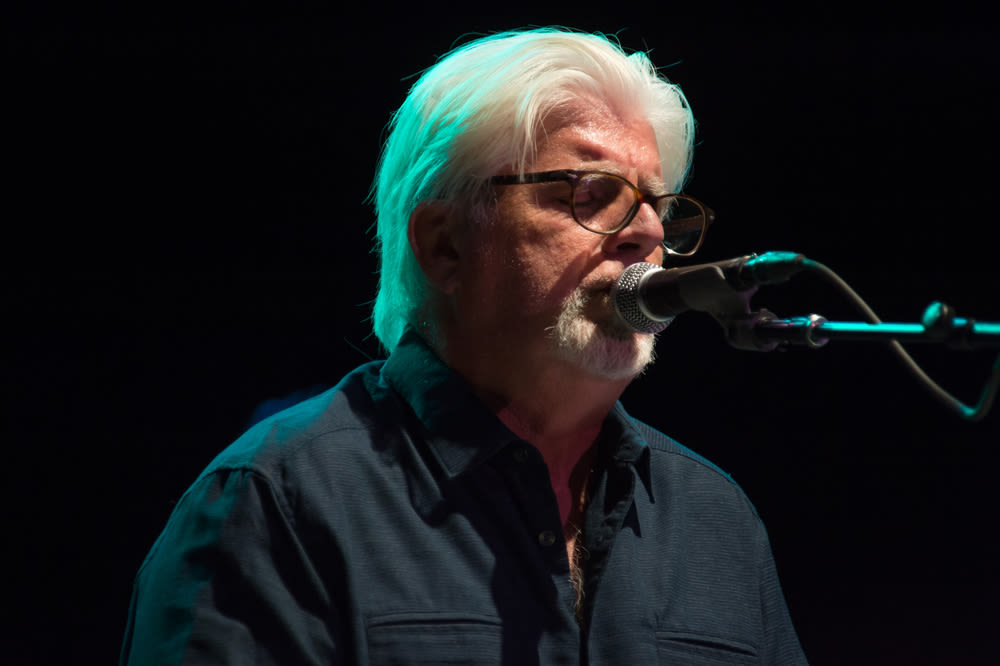
Michael McDonald. One might say the smoothest mother in music history.
Image: Randy Miramontez / Shutterstock.com
About 10 years ago , somebody showed me a YouTube video of Michael McDonald and Kenny Loggins writing a song that’s smoother and more polished than anything else on the airwaves.
That video—lovingly spoofing the writing of the Doobie Brothers' 1978 hit “What a Fool Believes”— was the first episode of a series called Yacht Rock . Premiering in 2005 on the Los Angeles-based television incubator Channel 101, Yacht Rock struck a chord with a generation of music nerds who attempt to compartmentalize and categorize the songs they heard as children. The term “yacht rock” itself grew out of the video series, permeating our culture today as much as the music had back in the late 1970s and early '80s.
But here’s the thing about terms that permeate our culture today: They get compromised and bastardized to fit other people’s cozy narratives, typically based on their own nostalgia. Google “yacht rock” and you’ll find articles from across the media spectrum attempting to define the term , failing hard because these writers just don’t get it. There’s even a new BBC series about yacht rock , and while it went into great detail providing context on the emergence of the musical style, it still turned out to be one person’s definition that included songs that were—as some of us might say— nyacht rock.
I’m here to set the record straight—or smooth. Yacht rock is music, primarily created between 1976 and ‘84, that can be characterized as smooth and melodic, and typically combines elements of jazz, rhythm and blues, and rock. You’ll hear very little acoustic guitar (get that “Horse With No Name” out of there) but a lot of Fender Rhodes electric piano. Lyrics don’t get in the way of the song’s usually high musicality (some of the finest Los Angeles session players, including members of the band Toto, play on many yacht rock tunes.) The lyrics may, however, speak about fools. The songs are as light and bubbly as champagne on the high seas, yet oddly complex and intellectual.
And just to hammer this home: Fleetwood Mac is not yacht rock. Daryl Hall & John Oates are 98 percent not yacht rock. Those folkie songs from America, Pure Prairie League, and Crosby, Stills & Nash? Nope. Rupert Holmes's "Escape (The Piña Colada Song)"? Too wordy and not musically interesting—not yacht rock. How about "Summer Breeze" by Seals & Crofts? A little too folky, but close.
I’m not affected by personal nostalgia (I was born in 1984, just as the yacht rock era was ending); instead, I’m an objective music lover who just so happens to have been researching yacht rock for the past several years. I know the men who coined the term “yacht rock” ( they have a great podcast and actually rate whether or not a song is yacht rock ), and they can back me up on this.
So whether you’re docked for the summer or about to set sail on an adventure, allow me to steer you in the right direction. I've crafted for you the definitive yacht rock playlist—below are a few highlights:
“What a Fool Believes,” The Doobie Brothers
I won’t get any nerdier, I’ll just say that this is the song that epitomizes yacht rock. It’s effortlessly melodic, bouncy, and bright, features a prominent Fender Rhodes electric piano, and includes an ultra-smooth vocal from Michael McDonald.
“Heart to Heart,” Kenny Loggins
Loggins never quite knew whether to be a jazzy folkie or a rocker, but in between those two phases were a couple yachty gems, including this cool breeze on a warm summer day, from the 1982 album High Adventure . Just listen to Loggins’s vocal—it’s butter.
“FM,” Steely Dan
Steely Dan brought a New York edge and a habit of wanting the best players on their records to Los Angeles. In time their sound morphed into the whitest smooth jazz on the planet, aka yacht rock. “FM,” from 1978, has both that snarky exterior and smooth center, but look up the band’s classic albums Aja and Gaucho for a number of yachty delights.
“Human Nature,” Michael Jackson
Once you get to know yacht rock, you can begin traveling into yacht soul—smooth songs from top studio players that lean just a little harder on the R&B. This classic song from the 1982 album Thriller was written and performed by Toto. Jackson provides the gorgeously breezy vocal.
“Rosanna,” Toto
Speaking of Toto, these guys were and still are awesome musicians. The 1982 hit “Rosanna” proves this in spades—the drum shuffle is iconic, the twists are remarkable, and the sound is smoother than a well-sanded skiff.
“Nothin’ You Can Do About It,” Airplay
Who is Airplay? A one-album band created by mega-producer David Foster and session guitarist Jay Graydon. These guys wrote Earth, Wind & Fire’s “After the Love Has Gone,” then this absolute stunner from 1980, a bouncy, giddy, and gentle pop classic.
“I Really Don’t Know Anymore,” Christopher Cross
Emerging out of nowhere with a Grammy-winning album in 1979, Cross is the perfect yacht rock figure, a normal-looking white dude who just so happens to sing like the wind on a summer’s evening. This song, from that debut album, is essential yacht rock with a noticeable background singer—of course, Michael McDonald.
If you want to catch McDonald and sing along to some of his yacht rock classics, he’s performing Friday night at Cynthia Woods Mitchell Pavilion in The Woodlands. Chaka Khan—who also has a few yacht rock tunes in her catalog—will open. Tickets start at $39.50; prepare accordingly with this summer yacht rock playlist on Spotify . You’re welcome.
Related Content

On The Town

What to Do and See This Summer
06/01/2021 By Chris Gray

Which Music Venues are Maintaining Covid-19 Restrictions?
03/15/2021 By Sydney Davis

Scary feet, scary feet, scary feet!
5 Things to Do in Houston This Weekend, Oct 23–25
10/23/2020 By Emma Schkloven

On the town
What to Do and See This Month, From Post Malone to Paw Patrol
03/02/2020 By Chris Gray

Yacht Rock: Album Guide
By David Browne
David Browne
Summer’s here and time is right for dancing … on the deck of a large nautical vessel. During the late Seventies and early Eighties, the radio was dominated by silver-tongued white-dude crooners with names like Rupert and Gerry, emoting over balmy R&B beats, swaying saxes, and dishwasher-clean arrangements. Though it didn’t have a name, the genre — soft rock you could dance to — was dismissed by serious rock fans as fluffy and lame. But thanks to a web series in the mid-2000s, the style — belatedly named “ yacht rock ” — has since spawned a satellite-radio channel, tribute bands, and a Weezer cover of Toto’s “Africa.” Is the modern love of the music ironic or sincere? Hard to say, yet there’s no denying yacht rock is a legit sound with a vibe all its own that produced a surprising amount of enduring music perfectly at home in summer. (John Mayer even tips his own sailor’s hat to the genre on his new “Last Train Home” single, and even the aqua-blue cover of his upcoming Sob Rock album.) The resumption of the Doobie Brothers’ 50th anniversary tour, postponed last year due to COVID-19 but scheduled to restart in August, is the cherry atop the Pina colada.
Boz Scaggs, Silk Degrees (1976)
Before yacht rock was an identifiable genre, Scaggs (no fan of the term, as he told Rolling Stone in 2018) set the standard for what was to come: sharp-dressed white soul, burnished ballads that evoked wine with a quiet dinner, and splashes of Me Decade decadence (the narrator of the pumped “Lido Shuffle” is setting up one more score before leaving the country). Add in the Philly Soul homage “What Can I Say,” the burbling life-on-the-streets homage “Lowdown,” and the lush sway of “Georgia,” and Silk Degrees , internationally or not, set a new high bar for Seventies smoothness.
Steely Dan, Aja (1977)
The sophisticated high-water mark of yacht, Donald Fagen and Walter Becker’s masterpiece is the midway point between jazz and pop, with tricky tempo shifts, interlocking horn and keyboard parts, and pristine solos. Not settling for easygoing period clichés, these love songs, so to speak, are populated by a sleazy movie director (the gorgeous rush of “Peg”), a loser who still hopes to be a jazzman even if the odds are against him (the heart-tugging “Deacon Blues”), and a guy whose nodding-out girlfriend is probably a junkie (“Black Cow”). The most subversive cruise you’ll ever take.
The Doobie Brothers, Minute by Minute (1978)
The Doobies got their start as a biker-y boogie band, but they smoothed things out for Minute by Minute . Highlighted by “What a Fool Believes,” the unstoppable Michael McDonald-Kenny Loggins co-write, the LP piles on romantic turmoil, falsetto harmonies, and plenty of spongy electric piano. But it also proves how much personality and muscle the Doobies could bring to what could be a generic sound. McDonald’s husky, sensitive-guy delivery shrouds the unexpectedly bitter title song (“You will stay just to watch me, darlin’/Wilt away on lies from you”) and honoring their biker roots, “Don’t Stop to Watch the Wheels” is about taking a lady friend for a ride on your hog.
Editor’s picks
Every awful thing trump has promised to do in a second term, the 250 greatest guitarists of all time, the 500 greatest albums of all time, 25 most influential creators of 2024.
Further Listening
Seals & crofts, get closer (1976).
The Dylan-goes-electric moment of yacht, “Get Closer” validated the idea that folkie singer-songwriters could put aside their guitars (and mandolin), tap into their R&B side and cross over in ways they never imagined. In addition to the surprising seductiveness of the title hit, Get Closer has plenty of yacht-rock pleasures. In “Goodbye Old Buddies,” the narrator informs his pals that he can’t hang out anymore now that he’s met “a certain young lady,” but in the next song, “Baby Blue,” another woman is told, “There’s an old friend in me/Tellin’ me I gotta be free.” A good captain follows the tide where it takes him.
Christopher Cross, Christopher Cross (1979)
Cross’ debut swept the 1981 Grammys for a reason: It’s that rare yacht-rock album that’s graceful, earnest, and utterly lacking in smarm. Songs like the politely seductive “Say You’ll Be Mine” and the forlorn “Never Be the Same” have an elegant pop classicism, and the yacht anthem “Sailing” could be called a powered-down ballad. Fueled by a McDonald cameo expertly parodied on SCTV , the propulsive “Ride Like the Wind” sneaks raw outlaw lyrics (“Lived nine lives/Gunned down ten”) into its breezy groove, perfecting the short-lived gangster-yacht subgenre.
Rupert Holmes, Partners in Crime (1979)
The album that made Holmes a soft-rock star is known for “Escape (The Piña Colada Song),” which sports a made-for-karaoke chorus and a plot twist worthy of a wide-collar O. Henry. But what distinguishes the album is the Steely Dan-level musicianship and Holmes’ ambitious story songs, each sung with Manilow-esque exuberance. The title track equates a hooker and her john to co-workers at a department store, “Lunch Hour” ventures into afternoon-delight territory, and “Answering Machine” finds a conflicted couple trading messages but continually being cut off by those old-school devices.
Steely Dan, Gaucho (1980)
The Dan’s last studio album before a lengthy hiatus doesn’t have the consistency of Aja, but Gaucho cleverly matches their most vacuum-sealed music with their most sordid and pathetic cast of characters. A seedy older guy tries to pick up younger women in “Hey Nineteen,” another loser goes in search of a ménage à trois in “Babylon Sisters,” a coke dealer delivers to a basketball star in “Glamour Profession,” and the narrator of “Time Out of Mind” just wants another heroin high. It’s the dark side of the yacht.
Going Deeper
Michael mcdonald, if that’s what it takes (1982).
Imagine a Doobie Brothers album entirely comprised of McDonald songs and shorn of pesky guitar solos or Patrick Simmons rockers, and you have a sense of McDonald’s first and best post-Doobs album. If That’s What it Takes builds on the approach he nailed on “What a Fool Believes” but amps up the sullen-R&B side of Mac’s music. His brooding remake of Lieber and Stoller’s “I Keep Forgettin’” is peak McDonald and the title track approaches the propulsion of Christopher Cross’ “Ride Like the Wind.” With his sad-sack intensity, McDonald sounds like guy at a seaside resort chewing over his mistakes and regrets – with, naturally, the aid of an electric piano.
Related Stories
Yacht rock babylon, ll cool j proves traditional hip-hop can be a pretty good thing on 'force'.
Kenny Loggins, Keep the Fire (1979)
Loggins’ journey from granola folk rocker to pleasure-boat captain embodies the way rock grew more polished as the Seventies wore on. Anchored by the percolating-coffeemaker rhythms and modestly aggro delivery of “This Is It,” another McDonald collaboration, Keep the Fire sets Loggins’ feathery voice to smooth-jazz saxes and R&B beats, and Michael Jackson harmonies beef up the soul quotient in “Who’s Right, Who’s Wrong.” The secret highlight is “Will It Last,” one of the sneakiest yacht tracks ever, fading to a finish after four minutes, then revving back up with some sweet George Harrison-style slide guitar.
Dr. Hook, Sometimes You Win (1979)
Earlier in the Seventies, these jokesters established themselves with novelty hits like “The Cover of ‘Rolling Stone,’’ but they soon paddled over to unabashed disco-yacht. Sometimes You Win features three of their oiliest ear worms: “Sexy Eyes,” “When You’re in Love with a Beautiful Woman” and “Better Love Next Time,” all oozing suburban pickup bars and the somewhat desperate dudes who hang out there. The album, alas, does not include “Sharing the Night Together,” recently reborn by way of its sardonic use in last year’s Breaking Bad spinoff El Camino .
Carly Simon, Boys in the Trees (1978)
As a trailblazing female singer-songwriter, Simon was already a star by the time yacht launched. Boys in the Trees features her beguiling contribution to the genre, “You Belong to Me,” a collaboration with the ubiquitous Michael McDonald. The Doobies cut it first, but Simon’s version adds an air of yearning and hushed desperation that makes it definitive. The album also packs in a yacht-soul cover of James Taylor’s “One Man Woman” and a “lullaby for a wide-eyed guy” called “Tranquillo (Melt My Heart),” all proving that men didn’t have a stranglehold on this style.
Anchors Aweigh
More smooth hits for your next high-seas adventure.
“BREEZIN’”
George Benson, 1976
The guitarist and Jehovah’s Witness made the leap from midlevel jazz act to crossover pop star with a windswept instrumental that conveys the yacht spirit as much as any vocal performance.
“WHATCHA GONNA DO?”
Pablo Cruise, 1976
Carefree bounce from a San Francisco band with the best name ever for a soft-rock act — named, fittingly, after a chill Colorado buddy.
“BAKER STREET”
Gerry Rafferty, 1978
Rafferty brought a deep sense of lonely-walk-by-the-bay melancholy to this epic retelling of a night on the town, in which Raphael Ravenscroft’s immortal sax awakens Rafferty from his morning-after hangover.
“REMINISCING”
Little River Band, 1978
The Aussie soft rockers delivered a slurpy valentine sung in the voice of an old man looking back on his “lifetime plan” with his wife. Innovative twist: flugelhorn solo instead of sax.
“WHENEVER I CALL YOU ‘FRIEND’ ”
Kenny Loggins and Stevie Nicks, 1978
After its ethereal intro, this rare genre duet grows friskier with each verse, with both Loggins and Nicks getting more audibly caught up in the groove — and the idea of “sweet love showing us a heavenly light.”
“LOTTA LOVE”
Nicolette Larson, 1978
Neil Young’s sad-boy shuffle is transformed into a luscious slice of lounge pop by the late Larson. Adding an extra layer of poignancy, she was in a relationship with Young around that time.
“STEAL AWAY”
Robbie Dupree, 1980
Is it real, or is it McDonald? Actually, it’s the best Doobies knockoff — a rinky-dink (but ingratiating) distant cousin to “What a Fool Believes” that almost inspired McDonald to take legal action.
“TAKE IT EASY”
Archie James Cavanaugh, 1980
Cult rarity by the late Alaskan singer-songwriter that crams in everything you’d want in a yacht song: disco-leaning bass, smooth-jazz guitar, sax, and a lyric that lives up to its title even more than the same-titled Eagles song.
“BIGGEST PART OF ME”
Ambrosia, 1980
Ditching the prog-classical leanings of earlier albums, this trio headed straight for the middle of the waterway with this Doobies-lite smash. Bonus points for lyrics that reference a “lazy river.”
“I CAN’T GO FOR THAT (NO CAN DO)”
Daryl Hall and John Oates, 1981
The once unstoppable blue-eyed soul duo were never pure yacht, but the easy-rolling beats and shiny sax in this Number One hit got close. Hall adds sexual tension by never specifying exactly what he can’t go for.
“COOL NIGHT”
Paul Davis, 1981
The Mississippi crooner-songwriter gives a master class on how to heat up a stalled romance: Pick a brisk evening, invite a female acquaintance over, and suggest . . . lighting a fire.
“KEY LARGO”
Bertie Higgins, 1981
Yacht’s very own novelty hit is corny but deserves props for quoting from not one but two Humphrey Bogart films ( Key Largo and Casablanca ).
“AFRICA”
The same year that members of Toto did session work on Michael Jackson’s Thriller, they released the Mount Kilimanjaro of late-yacht hits.
“SOUTHERN CROSS”
Crosby, Stills, and Nash, 1982
The combustible trio’s gusty contribution to the genre has choppy-water rhythms and enough nautical terminology for a sailing manual.
Jennifer Hudson Announces First-Ever Christmas Album 'The Gift of Love'
- A JHud Christmas
- By Tomás Mier
T.I. Testifies at $25 Million OMG Girlz Trial: 'Anyone with Eyes Can See' Alleged Theft
- "Undeniably blatant"
- By Nancy Dillon
Screamin’ Scott Simon, Sha Na Na Member Who Co-Wrote Song in 'Grease,' Dead at 75
- By Charisma Madarang
Quavo, Ty Dolla $ign Reunite on 'Transformers One' Soundtrack Single 'If I Fall'
- Autobot Realness
Travis Scott Team Questions 'Integrity' of U.S. Album Chart: Not 'About Travis vs. Sabrina'
- 'Questionable Tactics'
Most Popular
Brad pitt and george clooney dance to 4-minute standing ovation for ‘wolfs’ during chaotic venice premiere, richard gere jokes he had "no chemistry" with julia roberts in 'pretty woman', demi moore fuels speculation that she doesn't approve of channing tatum's plans to remake ghost, navarro, pegula highlight billionaire parents at u.s. open, you might also like, ‘unstoppable’ review: jharrel jerome and jennifer lopez in the rare sports crowd-pleaser you can believe in, cyndi lauper, tiffany haddish, lil’ kim, selma blair and darren criss in christian siriano’s front row, the best yoga mats for any practice, according to instructors, ‘the abcs of death’: how ant timpson and tim league made a midnight masterclass with 26 shorts, ravens, chiefs draw 23-year ratings high in blockbuster nfl opener.
Rolling Stone is a part of Penske Media Corporation. © 2024 Rolling Stone, LLC. All rights reserved.

- Arts & Photography

Enjoy fast, free delivery, exclusive deals, and award-winning movies & TV shows with Prime Try Prime and start saving today with fast, free delivery
Amazon Prime includes:
Fast, FREE Delivery is available to Prime members. To join, select "Try Amazon Prime and start saving today with Fast, FREE Delivery" below the Add to Cart button.
- Cardmembers earn 5% Back at Amazon.com with a Prime Credit Card.
- Unlimited Free Two-Day Delivery
- Streaming of thousands of movies and TV shows with limited ads on Prime Video.
- A Kindle book to borrow for free each month - with no due dates
- Listen to over 2 million songs and hundreds of playlists
- Unlimited photo storage with anywhere access
Important: Your credit card will NOT be charged when you start your free trial or if you cancel during the trial period. If you're happy with Amazon Prime, do nothing. At the end of the free trial, your membership will automatically upgrade to a monthly membership.

Buy new: .savingPriceOverride { color:#CC0C39!important; font-weight: 300!important; } .reinventMobileHeaderPrice { font-weight: 400; } #apex_offerDisplay_mobile_feature_div .reinventPriceSavingsPercentageMargin, #apex_offerDisplay_mobile_feature_div .reinventPricePriceToPayMargin { margin-right: 4px; } -26% $16.93 $ 16 . 93 FREE delivery Wednesday, September 11 on orders shipped by Amazon over $35 Ships from: Amazon Sold by: TheWorldShopUSA
Return this item for free.
We offer easy, convenient returns with at least one free return option: no shipping charges. All returns must comply with our returns policy.
- Go to your orders and start the return
- Select your preferred free shipping option
- Drop off and leave!
Save with Used - Good .savingPriceOverride { color:#CC0C39!important; font-weight: 300!important; } .reinventMobileHeaderPrice { font-weight: 400; } #apex_offerDisplay_mobile_feature_div .reinventPriceSavingsPercentageMargin, #apex_offerDisplay_mobile_feature_div .reinventPricePriceToPayMargin { margin-right: 4px; } $14.35 $ 14 . 35 FREE delivery Wednesday, September 11 on orders shipped by Amazon over $35 Ships from: Amazon Sold by: ZBK Wholesale

Download the free Kindle app and start reading Kindle books instantly on your smartphone, tablet, or computer - no Kindle device required .
Read instantly on your browser with Kindle for Web.
Using your mobile phone camera - scan the code below and download the Kindle app.

Image Unavailable

- To view this video download Flash Player
Follow the author

The Yacht Rock Book: The Oral History of the Soft, Smooth Sounds of the 70s and 80s Paperback – Illustrated, March 6, 2018
Purchase options and add-ons.
‘ It’s amazing that this style came to be. Can you imagine being a struggling musician back then? It must take an incredible amount of restraint to play that gently .’ — Actor/comedian Fred Armisen, from his foreword to this book
Just what is ‘yacht rock,’ you ask? Perhaps the easiest description is music that would not sound out of place being played while carousing aboard a yacht back in the good old days. But these songs were also some of the top pop gems of the 1970s and '80s. And while some associate yacht rock’s biggest songs with one-hit wonder artists, several of rock’s most renowned artists fall under this category, too including Fleetwood Mac, the Eagles, Steely Dan, Hall & Oates, The Doobie Brothers, Toto, and more.
Yacht rock seemed to have become extinct by the early twenty-first century … until a comedic video series, simply titled Yacht Rock, went viral and introduced captain’s hats and blazers to a whole new generation – as well as the emergence of a popular cover band, the Yacht Rock Revue, and of course, Jimmy Fallon’s on-air admiration of all things yacht rock.
Now, yacht rock is one of the most celebrated ‘yesteryear’ styles of pop music, and has resonated with a new generation of musicians (including the Fred Armisen/Bill Hader-led Blue Jean Committee and soul/funk/electronica crossover act Thundercat). But despite all the hoopla, there has never been a book that told the entire story of the genre. Until now. Featuring interviews with many of the heavy hitters of the genre, including John Oates, Kenny Loggins, and Don Felder, The Yacht Rock Book leaves no sail unturned. This is the definitive story of the yacht rock’s creation, rise, chart-smashing success, fall, and stunning rebirth.
- Print length 320 pages
- Language English
- Publisher Jawbone Press
- Publication date March 6, 2018
- Dimensions 6.12 x 1 x 8.5 inches
- ISBN-10 1911036297
- ISBN-13 978-1911036296
- See all details

Frequently bought together

Customers who viewed this item also viewed

Editorial Reviews
About the author, product details.
- Publisher : Jawbone Press; Illustrated edition (March 6, 2018)
- Language : English
- Paperback : 320 pages
- ISBN-10 : 1911036297
- ISBN-13 : 978-1911036296
- Item Weight : 2.31 pounds
- Dimensions : 6.12 x 1 x 8.5 inches
- #208 in Songwriting
- #432 in Music Reference (Books)
- #1,193 in Music History & Criticism (Books)
About the author
Greg Prato is a writer and journalist from Long Island, New York, whose writing has appeared in such renowned publications as Rolling Stone, Classic Rock, and Vintage Guitar. He is also the author of several popular books, including Grunge Is Dead: The Oral History Of Seattle Rock Music, MTV Ruled the World: The Early Years of Music Video, and A Devil on One Shoulder and an Angel on the Other: The Story of Shannon Hoon and Blind Melon, among other titles. And you may even have heard him on one of his many radio or TV appearances, which include interviews on The Howard Stern Wrap-Up Show, Eddie Trunk Live, and Feedback with Nik Carter and Lori Majewski.
Customer reviews
- 5 star 4 star 3 star 2 star 1 star 5 star 57% 23% 15% 4% 2% 57%
- 5 star 4 star 3 star 2 star 1 star 4 star 57% 23% 15% 4% 2% 23%
- 5 star 4 star 3 star 2 star 1 star 3 star 57% 23% 15% 4% 2% 15%
- 5 star 4 star 3 star 2 star 1 star 2 star 57% 23% 15% 4% 2% 4%
- 5 star 4 star 3 star 2 star 1 star 1 star 57% 23% 15% 4% 2% 2%
Customer Reviews, including Product Star Ratings help customers to learn more about the product and decide whether it is the right product for them.
To calculate the overall star rating and percentage breakdown by star, we don’t use a simple average. Instead, our system considers things like how recent a review is and if the reviewer bought the item on Amazon. It also analyzed reviews to verify trustworthiness.
Customers say
Customers find the music great and the content insightful into an era long ago.
AI-generated from the text of customer reviews
Customers find the music in the book great, interesting, and a guided tour of music. They also say it's more interesting to play them out live.
"...in the book, but there are some interesting insights and a guided tour of music I loved as a young man...." Read more
"...how the songs were written or produced, making it more interesting to play them out live ...." Read more
"...Whatever you choose to call it, it’s great music and this a great book." Read more
"...I loved learning about the songs , the artists, and the different stories they had to tell about each of the songs." Read more
Customers find the book's content great, with great insight into an era long ago and information about classic music.
"...There are no shocking revelations in the book, but there are some interesting insights and a guided tour of music I loved as a young man...." Read more
" Great information about some classic music , awesome read." Read more
" Great insight from an era long ago..." Read more
- Sort reviews by Top reviews Most recent Top reviews
Top reviews from the United States
There was a problem filtering reviews right now. please try again later..
- Amazon Newsletter
- About Amazon
- Accessibility
- Sustainability
- Press Center
- Investor Relations
- Amazon Devices
- Amazon Science
- Sell on Amazon
- Sell apps on Amazon
- Supply to Amazon
- Protect & Build Your Brand
- Become an Affiliate
- Become a Delivery Driver
- Start a Package Delivery Business
- Advertise Your Products
- Self-Publish with Us
- Become an Amazon Hub Partner
- › See More Ways to Make Money
- Amazon Visa
- Amazon Store Card
- Amazon Secured Card
- Amazon Business Card
- Shop with Points
- Credit Card Marketplace
- Reload Your Balance
- Amazon Currency Converter
- Your Account
- Your Orders
- Shipping Rates & Policies
- Amazon Prime
- Returns & Replacements
- Manage Your Content and Devices
- Recalls and Product Safety Alerts
- Registry & Gift List
- Conditions of Use
- Privacy Notice
- Consumer Health Data Privacy Disclosure
- Your Ads Privacy Choices
Holding the Music in Your Hands ®
Thanks for being a part of the SDE community.
Remember Me
Forgot password?
Don't have an account? Sign up!

Katie Puckrik’s A Yacht Rock Odyssey – reviewed
By david quantick.
By david quantick
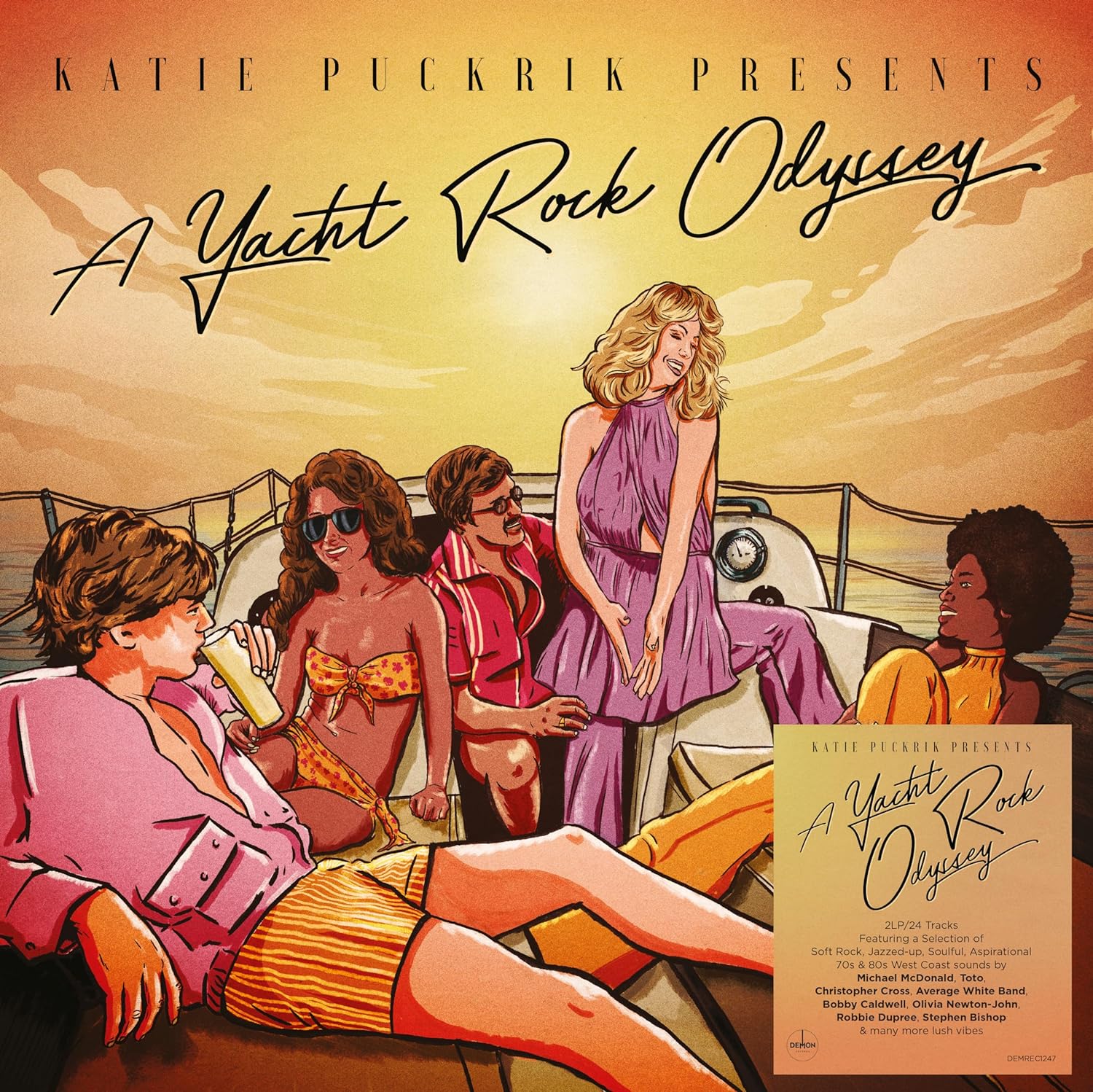
According to the sleeve notes for this epically-detailed boxed set, “Yacht Rock is a neologism coined decades after the music’s heyday to corral like-minded mellowness into a petting zoo of smooth.” In other words, Yacht Rock doesn’t exist. Like “freakbeat” and other genres designed to make it easier to label music, Yacht Rock is a vague, newishly-minted label that enables people to find a link between apparently unconnected records.
That said, even people who hate labels have to admit that the criteria for what constitutes Yacht Rock are fairly clear: a vague sort of jazzy pop sound, a moderately catchy chorus that leaps out at the listener like a heavily-drugged salmon, a great deal of saxophone, the soft rain of tinkly keyboards, and Michael McDonald. It’s terrifying how often Michael McDonald turns up here: as a songwriter, as a backing vocalist, and as both a solo artist and member of the Doobie Brothers, McDonald is the Zelig of Yacht Rock. It’s tempting to imagine a timeline where Michael McDonald was assassinated by Lee Harvey Oswald and Yacht Rock never happened.
Not to set the catamaran among the pigeons, but Yacht Rock is one of the most divisive imaginary genres of all time David Quantick
Not to set the catamaran among the pigeons, but Yacht Rock is one of the most divisive imaginary genres of all time. When I mentioned to a few people that I was writing about a Yacht Rock compilation, their reactions were to say the least strong, and involved swearing. For many people, the sweet blandness of Yacht Rock and its associations (the 1970s, cocktails, swimwear, yachts) is infuriating, and the idea that this wafting, somehow heartless music is now being celebrated instead of, say, buried in the earth’s molten core for ever, is horrific to them. It is, as the older generation say, like punk never happened. Session musicians rule the day: instead of fiery passion and musical aggression, everything is the musical equivalent of a Harvey Wallbanger – overly sweet, brightly coloured, and liable to give you a terrible hangover. “Yacht” it may be, “rock” it isn’t. It’s not soul, either, or disco, and quite often it isn’t pop. The words are full of exhortations – ‘Move On’, ‘Hold On’, ‘Back Off’, ‘Turn Your Love Around’ – but the tunes send out the opposite message: stay still, give up, don’t move, leave your love in neutral.
Not every song is like that, of course. There are great songs here – Kool & The Gang’s ‘Too Hot’, Robert Palmer’s ‘Every Kind Of People’, Elkie Brooks’ ‘Fool If You Think It’s Over’ – but these are Yacht Rock in name only, and for many just bring to mind Albert Einstein’s famous line: if it’s good, it’s not Yacht Rock, and if it’s Yacht Rock, it’s not good. The musical range of this compilation is pretty consistent, but there are exceptions (one of which will be discussed imminently).
There’s also the faint reek of irony about Yacht Rock. Many remember the whole “ guilty pleasures ” trend of a few years back in which people celebrated “tacky” music from their youth in a half-genuine, half-raised-eyebrow kind of way. This was, they said, no way to consume music: if you love something, you should just love it without shame, and not be laughing at it at the same time as you are listening to it. And it’s hard not to be vexed by the legions of people with wry tears in their eyes punching the air to Leo Sayer : almost as hard, in fact, as a non-fan of this pseudo-genre to listen to an astonishing four CDs of yacht rock.
As a piece of archive, A Yacht Rock Odyssey is up there with the great 1960s garage band compilations, just substituting mellow sax for fuzz guitar David Quantick
But as that non-fan, I am paradoxically full of admiration for this project. It is compiler Katie Puckrik’s labour of love: presenter of a radio show devoted to Yacht Rock, Puckrik knows her stuff, as you might expect from someone who’s spent her entire life working in music, from dancing on a Pet Shop Boys tour to fronting the Lust For Life tribute band to DJing and presenting radio shows. Her research for this collection is mind-boggling: there are acts from all over the world, obscure and otherwise, representing funk, soft rock, jazz and “Japanese City Pop” (genres within genres). The sleeve-notes are fantastically informative, witty and sometimes surprising (apart from the fact that ace blandsman Christopher Cross wrote ‘Ride Like The Wind’ on acid, there’s also the little-known link between Yacht Rock and serial killers). This is far from being an ironic or silly collection: it’s put together with love and knowledge, and that’s all you can ask for. As a piece of archive, A Yacht Rock Odyssey is up there with the great 1960s garage band compilations, just substituting mellow sax for fuzz guitar: it’s a Pebbles for cokeheads. 76 tracks from the sublime – Carole Bayer Sager’ ‘It’s The Falling In Love’, Boz Scaggs’ ‘Lowdown’ – to the ridiculous…
Which brings us to the elephant in the room: well, not so much ‘elephant’ as ‘herd of freakishly large mutant space dino-mammoths” and not so “room” as “very small box.” The track that rises above the others like Olympus above the Serengeti. A song so big that it encompasses an entire continent.
‘Africa’, by Toto.
Calling ‘Africa’ a “Yacht Rock” song is like calling Bob Dylan’s ‘Like A Rolling Stone’ a folk song. It’s like calling The Beatles a Merseybeat group. It’s accurate, but also it doesn’t begin to even hint at the enormousness of the thing. ‘Africa’ isn’t Yacht Rock. If you played ‘Africa’ on an actual yacht, the yacht would explode, taking with it the entire Caribbean Sea and most of Florida. Next to some needle fluff like, say, Michael Sembello’s ‘Lay Back (Menage A Trois)’, ‘Africa’ is a mindless behemoth of a song, crushing everything in its path. Which is probably why it’s been placed, sensibly, at the end of CD1, where it both acts as a powerful finale and also is liable to cause the least amount of damage. Puckrik devotes a whole page of her sleeve-notes to ‘Africa’, detailing both its extraordinary renaissance in the 21st century and what she calls its lyrical “clunkiness.” She makes a great case for ‘Africa”s emotional resonance to a new generation, and points out that Toto thought it was “the weirdest song they ever did” (listening to Toto’s other, equally thrilling but marginally more unimaginative soupfests, you can see their point).
And so ‘Africa’ stands over its charges, like a lion king sworn to protect a lot of, I don’t know, cocktail monkeys and giraffes made of Doritos, safe in the knowledge that, like it or not, Yacht Rock has been anthologised, archived, and praised, definitively.
A Yacht Rock Odessey was reviewed by David Quantick. It’s released on Friday 30 August 2024, via Demon Music.
Compare prices and pre-order

Katie Puckrik
A yacht rock odyssey - limited 4cd set with signed print.

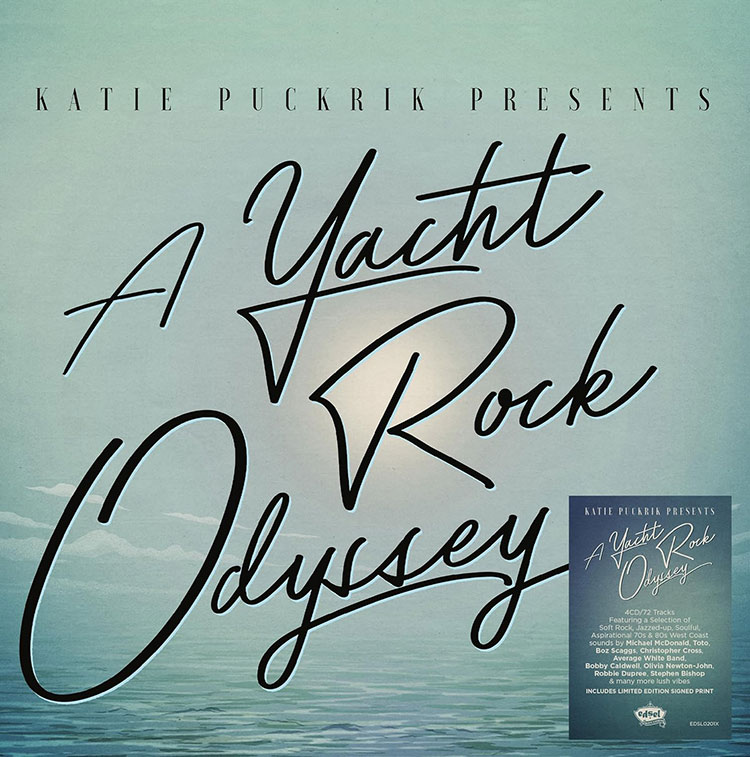







IMAGES
COMMENTS
Yacht rock (originally known as the West Coast sound [4] [5] or adult-oriented rock [6]) is a broad music style and aesthetic [7] commonly associated with soft rock, [8] one of the most commercially successful genres from the mid-1970s to the mid-1980s. Drawing on sources such as smooth soul, smooth jazz, [1] R&B, and disco, [7] common stylistic traits include high-quality production, clean ...
Complete behind-the-scenes story of the most popular history-of-smooth-music series ever made. Dave "Koko" Lyons, center, and Hunter "Messina" Stair regale some young women with tales of smooth ...
Yacht rock began as a sendup of the late '70s and early '80s smooth jams to which many Millennials and late period Gen-Xers were likely conceived, then morphed into a beloved musical genre that ...
The name "yacht rock" didn't enter the popular imagination until decades after its heyday in the early 1980s. It was a public access comedy show that gave this genre its name, which evokes the breezy marinas of southern California.
The wide latitude yacht rock affords matters because music comes to define eras and outlines cultural trends (remember that yacht came in reaction to art rock and that says a lot about the swing ...
The idea of yacht rock conjures up a particular lifestyle, but beneath the surface lies a treasure trove of sophisticated hits that continue to resonate. Even some of those who signed up to the ...
Although not all yacht rock songs reference the ocean, yachts, or the beach, the distant roots of the sound and the vibe go back to 1961. That's the year The Beach Boys was formed. As noted by Jacobin Magazine, the cheerful fun in the sun beach aesthetic of The Beach Boys' sound provides the fundamental template for yacht rock's sound.What elevated The Beach Boys was the songwriting craft of ...
Yacht rock was born, and today the video series' creators even have a podcast, Beyond Yacht Rock. On Spotify, yacht rock is most popular among those aged 45-54 and 18-24, indicating that listeners who came of age during the music's heyday and their children love those smooth grooves. While yacht rock is most streamed in the U.S., U.K., and ...
Yacht rock (originally known as the West Coast sound [4] [5] or adult-oriented rock [6]) is a broad music style and aesthetic [7] commonly associated with soft rock, [8] one of the most commercially successful genres from the mid-1970s to the mid-1980s. Drawing on sources such as smooth soul, smooth jazz, [1] R&B, and disco, [7] common stylistic traits include high-quality production, clean ...
Yacht rock (originally known as the West Coast sound or adult-oriented rock) is a broad music style and aesthetic commonly associated with soft rock, one of the most commercially successful genres from the mid-1970s to the mid-1980s.
Finally, a name for that music: "Yacht Rock". Originally published January 9, 2006 at 12:00 am. A few little-known facts about singer/songwriter Michael McDonald: Aside from topping the charts ...
How Yacht Rock, a genre invented in the '00s, gave a name to the smooth West Coast music of the '70s and '80s. ... tells tales from a half-century of chart history. Through storytelling ...
The result is an infectious and uplifting groove - yacht rock at its finest. (Corey Irwin) 43. "Diamond Girl," Seals & Crofts (1973) Seals & Crofts were soft-rock stylists with imagination ...
Yacht rock is music, primarily created between 1976 and '84, that can be characterized as smooth and melodic, and typically combines elements of jazz, rhythm and blues, and rock.
Yacht Rock: Album Guide. From Steely Dan to Christopher Cross to Carly Simon, these smooth summer jams will take you away to where you're going to. Walter Becker, left, and Donald Fagen are Steely ...
Greg Prato's The Yacht Rock Book: The Oral History of the Soft, Smooth Sounds of the 70s and 80s goes straight to the sources for answers. Through interviews with its demigods--Kenny Loggins, Christopher Cross, John Oates, Daryl "The Captain" Dragon, and more--Prato's book explores the Yacht Rock universe from its inception and mellow rise to ...
Tribute bands started popping up around the country and one of them, Yacht Rock Revue (YRR) from Atlanta, filed a trademark for the music term. As their following grew, YRR invited the original artists to take the stage with them. In 2011 Peter Beckett, composer, founder and lead singer of Player, best known for their #1 hit Baby Come Back, was ...
For Episode #48 we set a course for adventure as we look at the history of Yacht Rock. A musical genre that is unique. Unlike any other, the yacht rock gen...
Yacht Rock is an online video series following the fictionalized lives and careers of American soft rock stars of the late 1970s and early 1980s. The series debuted at a Channel 101 screening on June 26, 2005. It placed in the top five at subsequent screenings until June 25, 2006, when the tenth episode placed seventh at the screening, and the series was canceled.
According to the sleeve notes for this epically-detailed boxed set, "Yacht Rock is a neologism coined decades after the music's heyday to corral like-minded mellowness into a petting zoo of smooth." In other words, Yacht Rock doesn't exist. Like "freakbeat" and other genres designed to make it easier to label music, Yacht Rock is a ...
The St. Petersburg River Yacht Club was established in 1860 and is one of the oldest Yacht clubs in Russia. It was bestowed royal patronage by the tsar in 1910 on its 50th anniversary. [citation needed] During the period prior to the revolution of 1917 the Saint Petersburg Yacht Club was a social centre for officers of the Russian Imperial Guard.
The St. Petersburg Yacht club has a rich history, and the membership rolls over the past century were literally a Who's Who list within the city. Today, the Yacht club is in the headlines with the news that Club leadership have a tentative goal to replace the current 51,000 sq ft structure with an improved facility to withstand major storms by ...
Neva Yacht Club. The Neva Yacht Club ( Yacht-club Neva or simply Club Neva) is a sailing club located in Saint Petersburg, Russia, close to the Neva River. It was founded in 1718 and was re-established as a club in 1958. It claims to be the first and oldest yacht club in Russia and even in the world, though this is challenged by the Royal Cork ...
In 1914, the rich history of spring training and Florida's love affair with baseball began when the city's former mayor, Al Lang, convinced Branch Rickey to move his St. Louis Browns to the Sunshine City for spring training. ... and yacht. In 1924 the Gandy Bridge opened—cutting travel time to Tampa by more than half, and positioning St. Pete ...